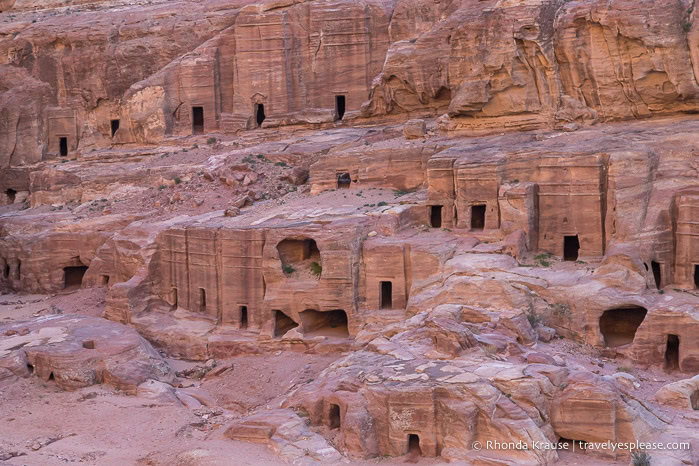How to Spend 2 Days in Petra- My Petra Itinerary
Purchases made through links earn us a small commission, at no extra cost to you.
No destination in Jordan is more iconic than Petra, the ancient capital of the Nabataean Empire and one of the world’s most remarkable archaeological sites.
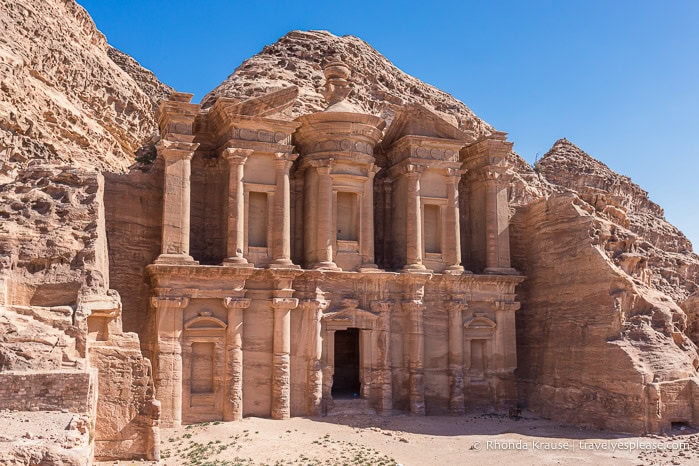
Famous for its elaborate rock-cut tombs and monuments carved into the sandstone mountains, Petra is a time-worn city that is both fascinating and beautiful. It’s a place where you can learn about the rise and fall of the Nabataean Kingdom, marvel at the ingenuity of an ancient civilization, and admire a unique type of architecture.
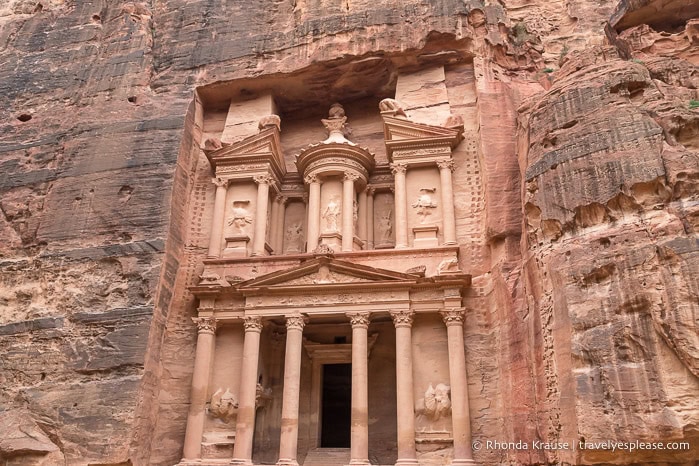
Petra’s archaeological significance and cultural importance have made the city a UNESCO World Heritage Site, one of the New 7 Wonders of the World, and Jordan’s most visited tourist attraction. As it’s such a compelling place, I planned to spend 2 days in Petra to ensure I didn’t miss out on any of its most valued treasures.
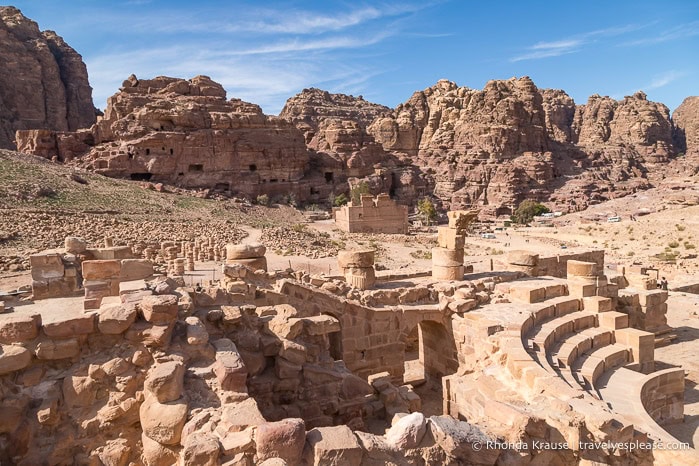
My Petra itinerary included visiting impressive tombs, exploring ruins, hiking trails to spectacular viewpoints, and more. There are a lot of things to see in Petra so I hope my 2 day Petra itinerary gives you some ideas for how to structure and spend your time when visiting Petra.
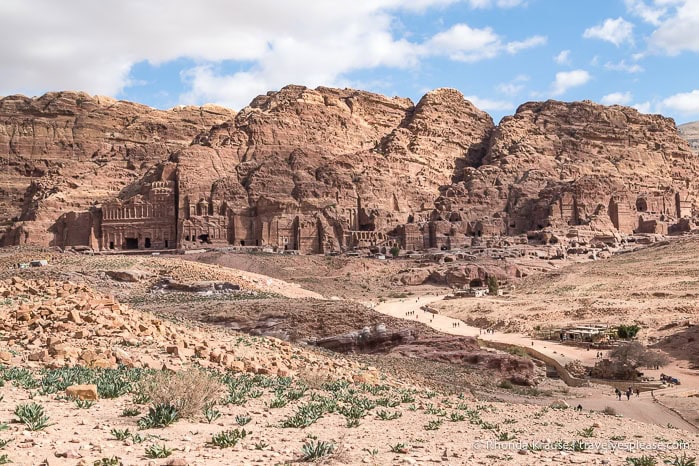
My Petra Itinerary- How to Spend 2 Days in Petra
The main things to do in Petra are admire ruins and hike among the rocky landscape, but the size of the park, number of attractions, and long walks between them can make it tricky to see more than just the highlights in one day.
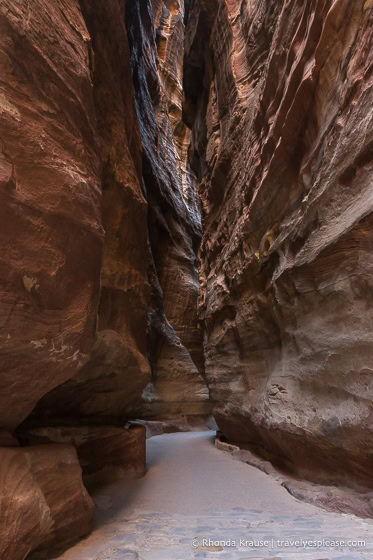
When I was planning my visit to Petra, I quickly realized that one day wasn’t going to be enough to experience everything I wanted, at the pace I wanted. I was interested in a couple of hikes to explore beyond the city centre and wanted to visit Petra at a relaxed pace with plenty of time to take photos and soak up the atmosphere.
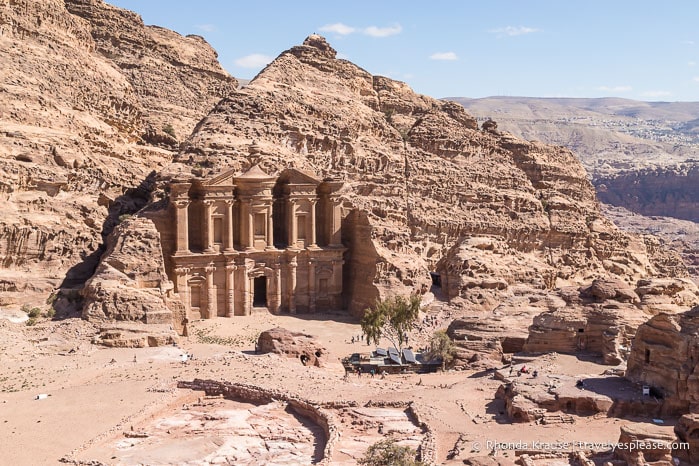
I decided that 2 days in Petra would be perfect to see the main sites, hike to some viewpoints, and have an evening to attend the Petra By Night event. Here’s a look at my Petra itinerary and all the wonderful things I got to see and do with 2 days in Petra.
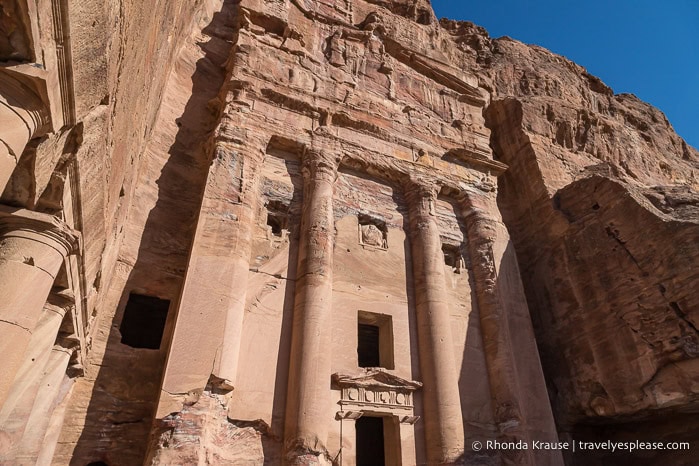
Evening 1: Petra By Night
On my first evening in Wadi Musa, the town at the entrance to Petra, I headed to the archaeological park for the Petra By Night event, a light show and musical performance in front of the Treasury.
The evening starts with a 2 km walk from the entry gate through the dimly lit Siq to the Treasury. I loved that my first view of the Treasury was of it illuminated at night behind rows of flickering paper bag lanterns. It looked so magical!
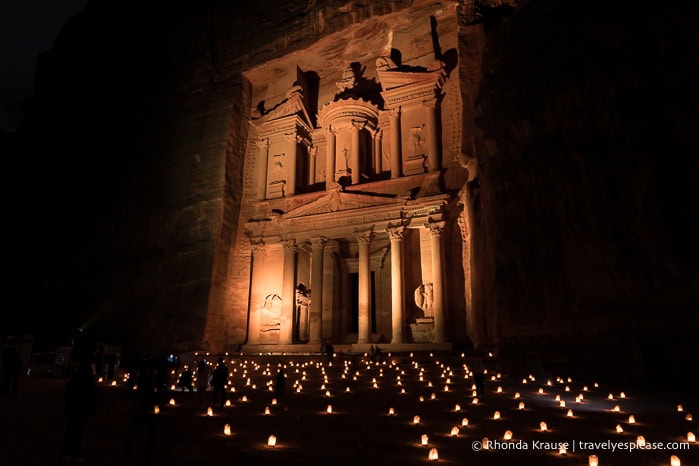
The show itself was very simple, with one man playing the flute and the light on the Treasury changing colours. Honestly, the show was forgettable but the enchanting atmosphere and beautiful setting made for a wonderful first impression of Petra.
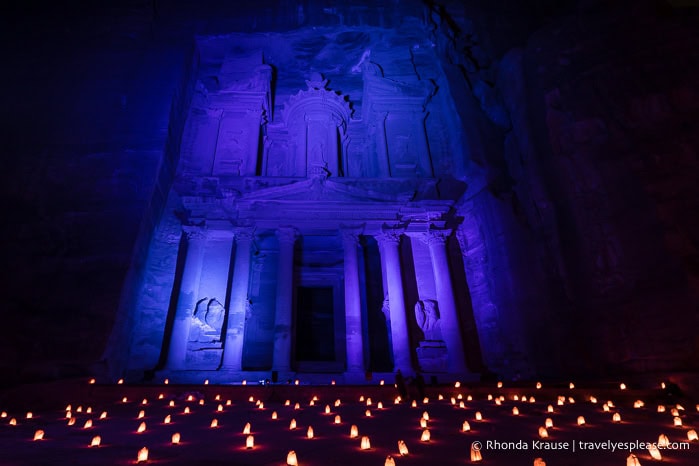
Day 1: Explore the City Centre, Hike to the Monastery
The first day of my Petra itinerary was spent visiting the top sites and highlights in the old city centre. I walked the entire main trail from the entrance to the Basin Restaurant (about 4 km) then walked another 1.6 km to the Monastery at the far end of the archaeological park.
Djinn Blocks and Obelisk Tomb
During the walk from the Visitor Centre to the Siq, I got my first look at the tombs and monuments the Nabataeans carved at Petra.
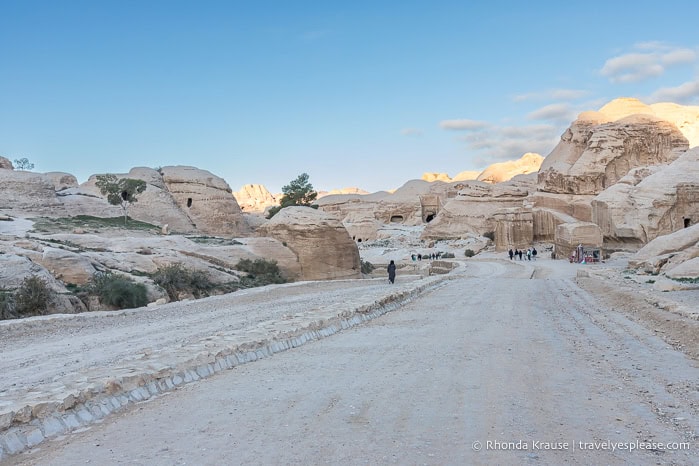
Among the hills on the right-hand side of the path, I noticed three square blocks carved into the rock. Known as the Djinn Blocks, these funerary monuments have grave shafts inside. Djinn is an Arabic spirit so some locals believe the blocks were built to house or appease the spirits.
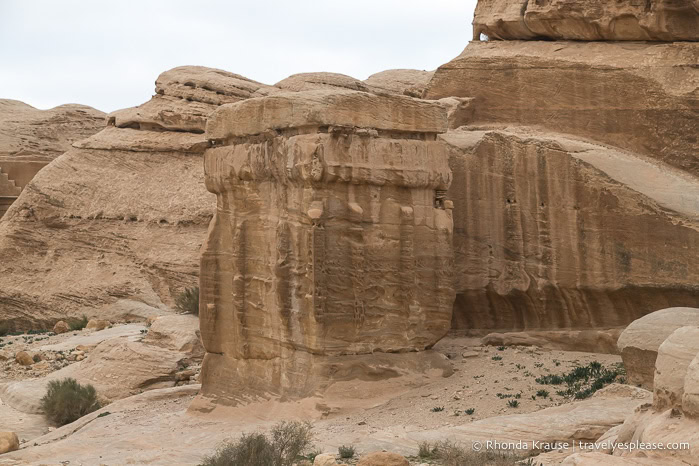
A short distance later, on the left-hand side of the path, I came to the Obelisk Tomb. Carved in the 1st century AD, this tomb has four obelisks above the entrance and a niche with a bas-relief statue believed to symbolize the five people buried there. Carved into the rock below the tomb is the triclinium, a dining hall.
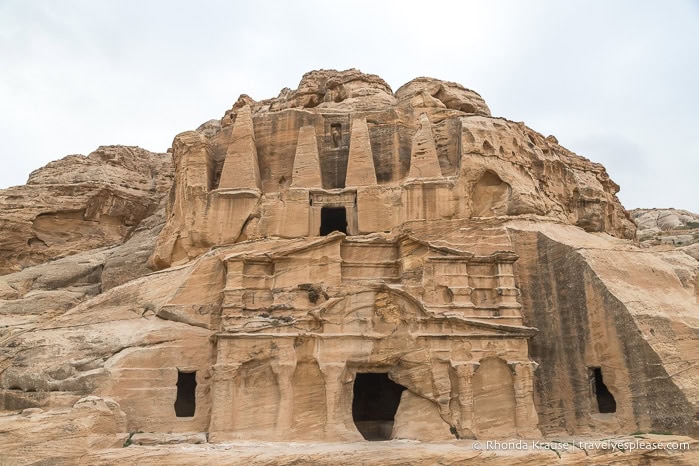
The Siq
The dramatic gateway to the ancient city of Petra is the Siq, a 1.2 km long narrow gorge. I couldn’t help but be excited walking through the Siq, anticipating seeing the Treasury and other architectural marvels at the other end.

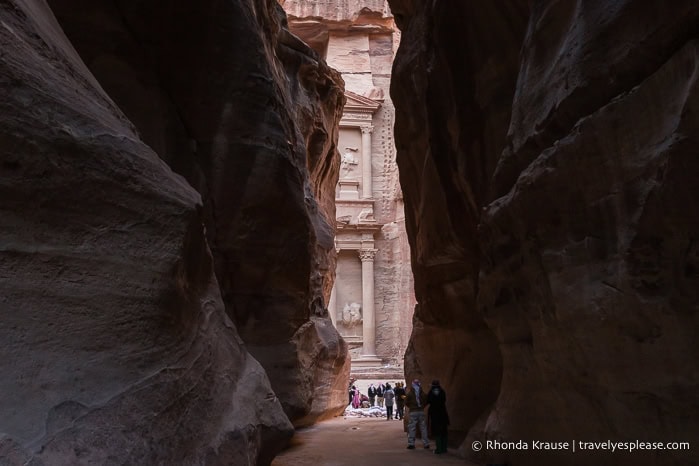
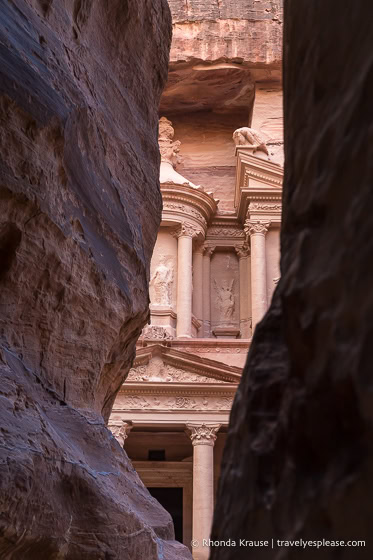
As eager as I was to reach the Treasury, it would have been a shame to rush through the Siq because it’s home to many interesting relics. There are shrines, reliefs, rock-cut water channels, and several niches housing Nabataean baetyl (a god symbol or sacred stone).
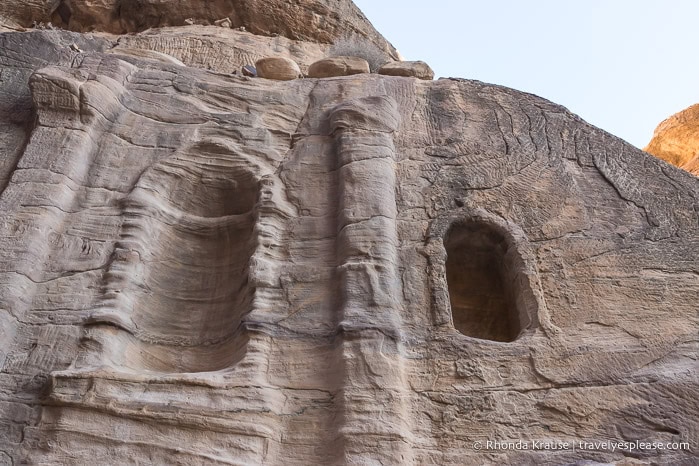
My favourite points of interest in the Siq were Sabinos Alexandros Station, a long row of votive niches created after the end of the Nabataean kingdom in the 2nd or 3rd century AD, and the remains of a camel caravan relief depicting a guide leading two camels into the city.
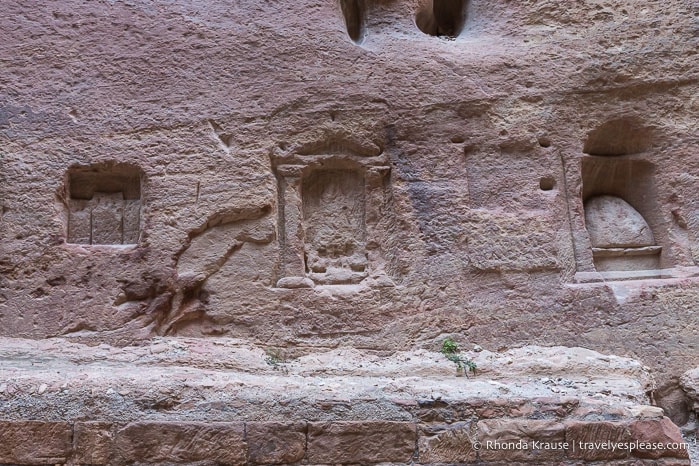
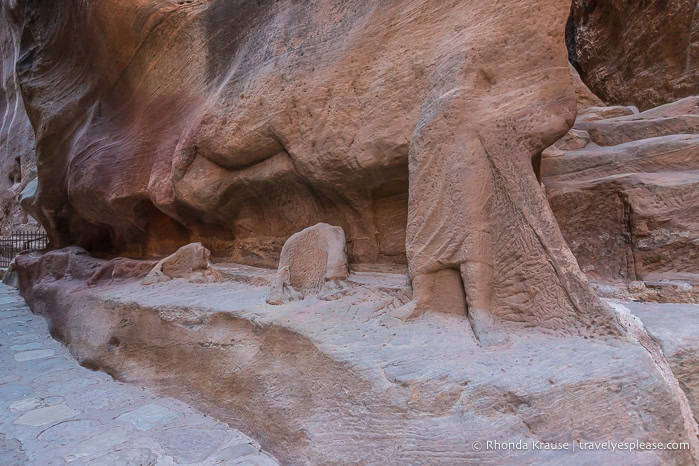
Something else that caught my eye in the Siq was a rock formation that looked like an elephant.
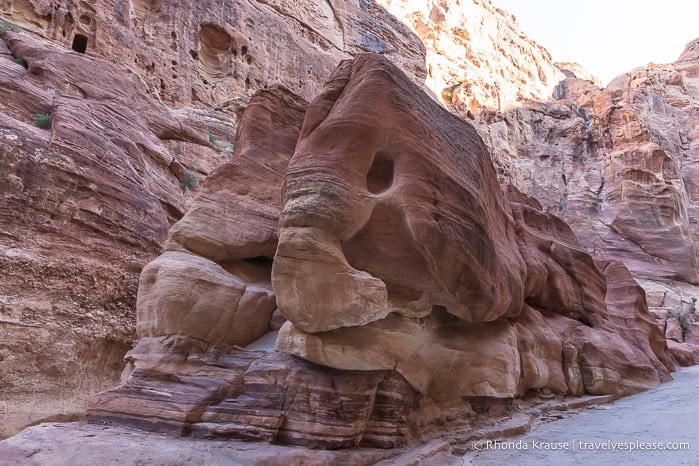
The Treasury (Al Khazneh)
Of all the things to see in Petra, the Treasury is the most legendary sight. Long famous with archaeologists, the Treasury gained wide recognition in popular culture after appearing in the 1989 movie “Indiana Jones and the Last Crusade”.
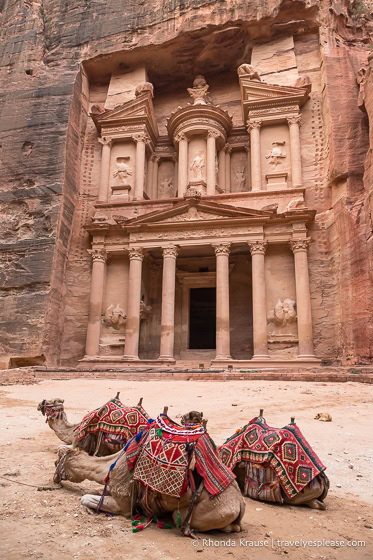
Believed to have been constructed in the 1st century BC, the Treasury remains one of the most impressive and intricate rock-cut tombs in Petra. Rising 37 m tall in the flat rock face of a towering cliff, its facade is decorated with Corinthian columns, elegant friezes, a tholos crowned by an urn, and figures of gods and goddesses.
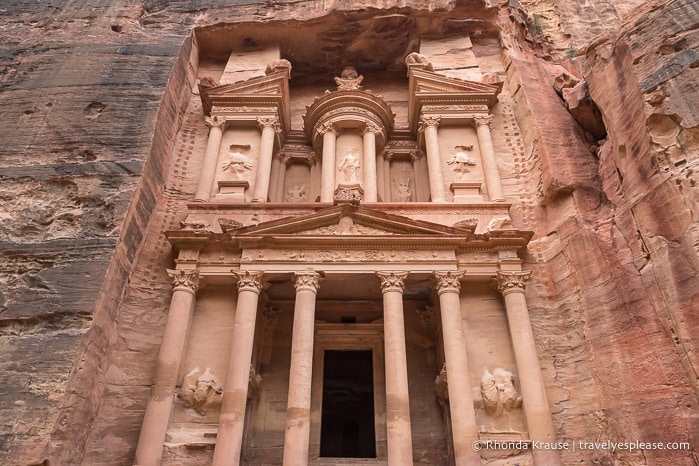
The ornamental figures on the facade of the Treasury include twin Greek gods Castor and Pollux in the lower corners, dancing Amazons in the upper corners, winged victories near the top on each side of the tholos, and on the tholos what is believed to be the Isis-Tyche, a syncretic deity combining the attributes of Egyptian goddess Isis and Greek goddess Tyche, both of whom are goddesses of good fortune.
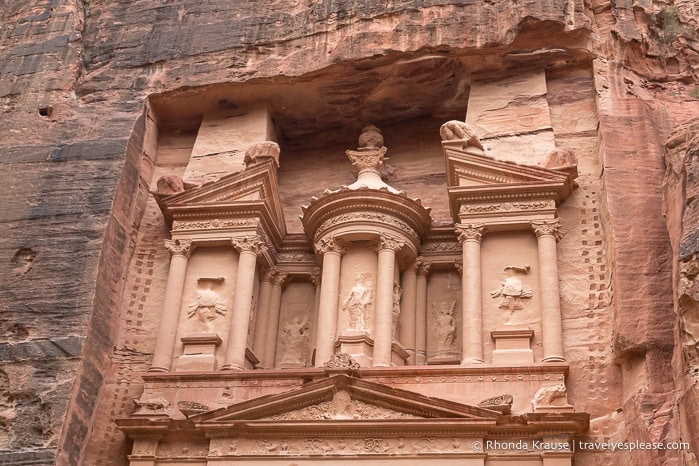
I was dazzled by the architecture of the Treasury, but I heard some interesting stories and legends about it too. One such legend is that it was given the Arabic name Al Khazneh, meaning “The Treasury”, because the local Bedouins believed the urn at the top contained pharaonic treasures (the urn is solid sandstone). Look closely and you can see bullet damage on the urn caused by Bedouins trying to shoot down the pharaoh’s “treasure”.
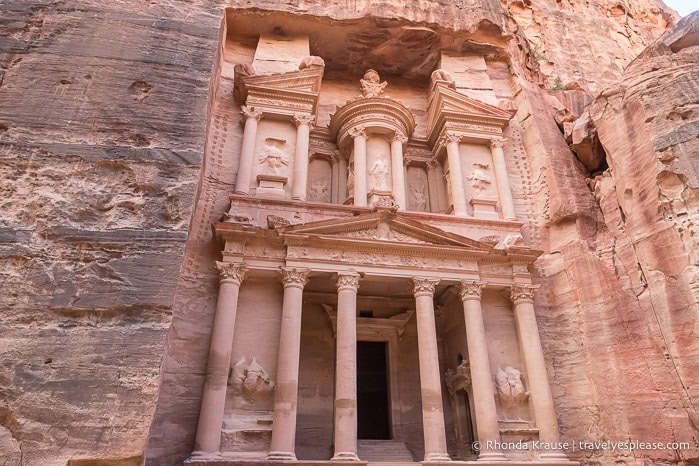
The Street of Facades
Around the corner from the Treasury is the Street of Facades. On both sides of the street is a row of tombs carved into the cliff face. The facades are not as ornate or well-preserved as some of the other tombs I saw during my 2 days in Petra, but you can still see some interesting architectural details like pilasters, crow steps, and cavettos.
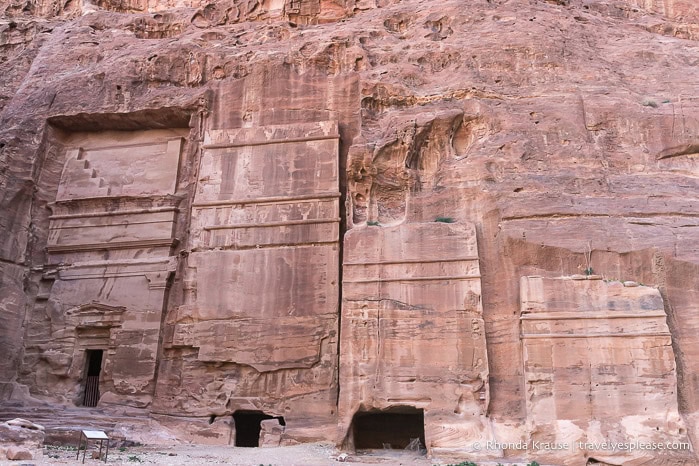
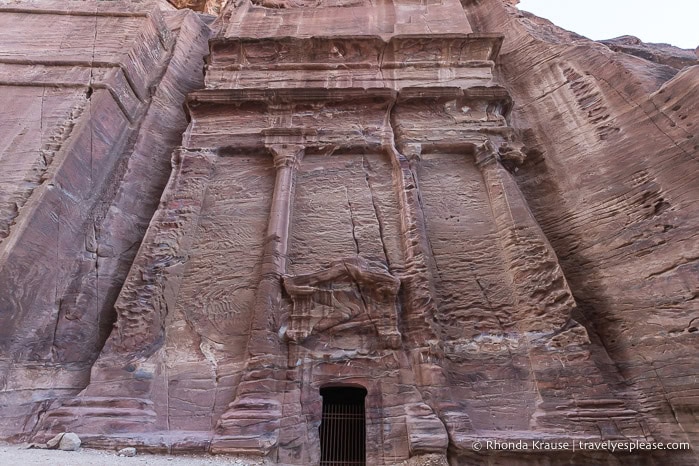
The Theatre
Continuing on the main path I soon came to Petra’s theatre which, like the tombs, is also carved into the side of a mountain. I was quite impressed by the size of this theatre- it has 3 levels of seating that can accommodate over 8000 people.
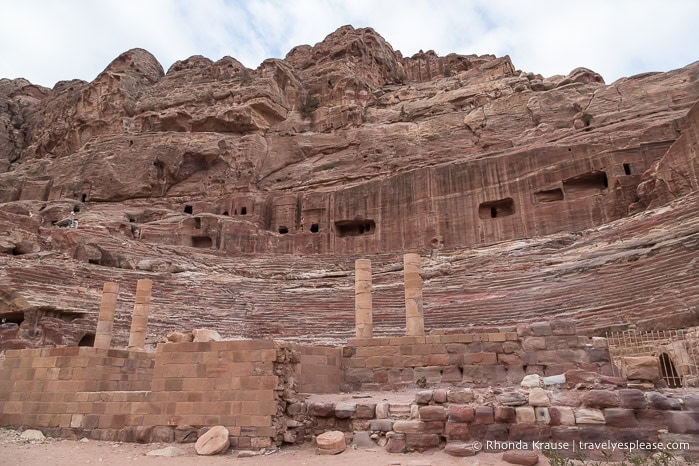
Its semicircular design, with multiple stories of seating, reminded me of Roman theatres. However, its construction is characteristically Nabataean, hewn from rock. I wonder how the acoustics compare to those of a Roman theatre?
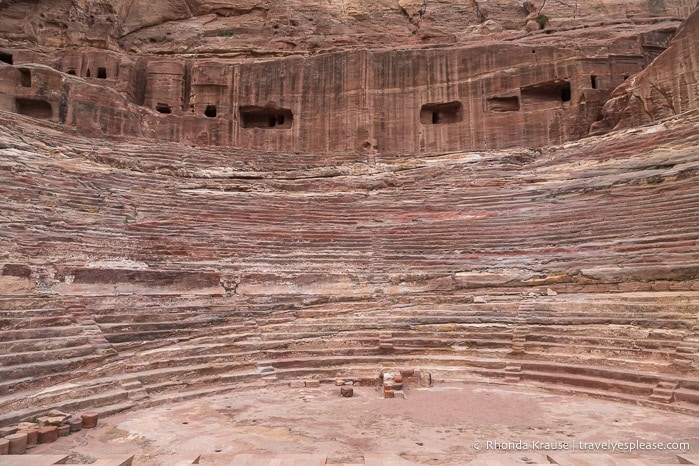
The Colonnaded Street
After the theatre, I walked down the Colonnaded Street, one of ancient Petra’s shopping streets. When the Romans took over the city they refurbished the street by adding columns to each side, of which only a few remain.

This is the only part of the city where there are buildings that were constructed rather than carved into the natural environment. Some points of interest on and beside the street are the Great Temple, the Temenos Gate (also known as the Hadrian Gate), and Qasr al-Bint at the end of the street.
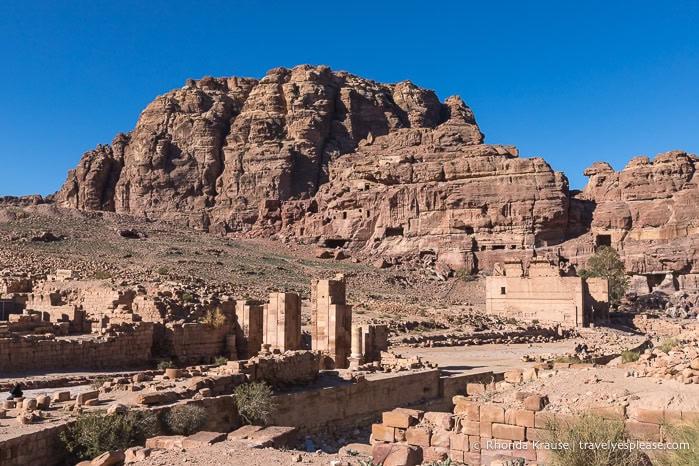
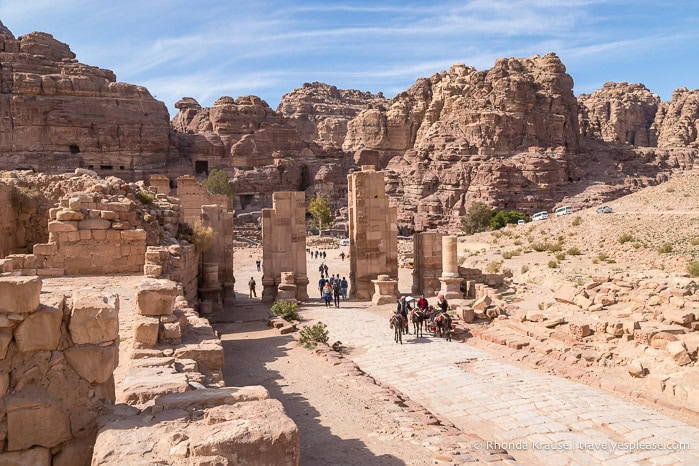
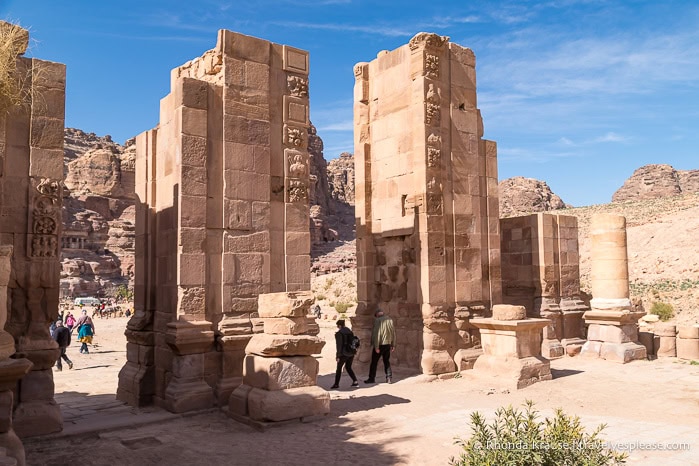
The Great Temple is worth exploring (I did this later in the day after visiting the Monastery), but for Qasr al-Bint, a temple dedicated to the god Dushara, a passing look was sufficient for me as I was excited to hike to the Monastery.
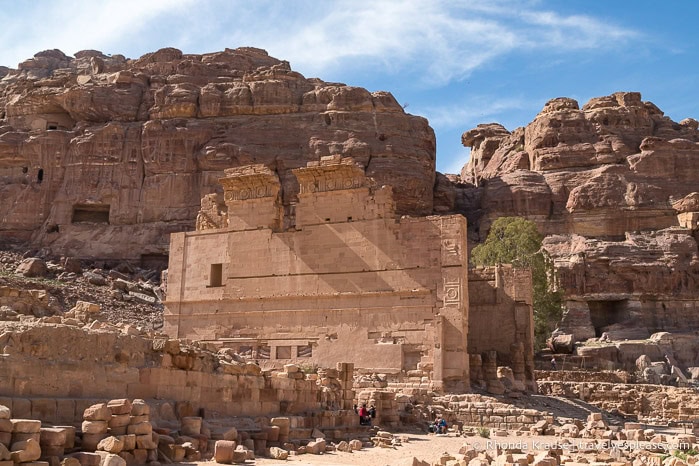
The Monastery (Ad Deir)
The Monastery is one of the top things to see in Petra and it should definitely be included on any Petra itinerary, even though it’s a long walk from the park’s main entrance.
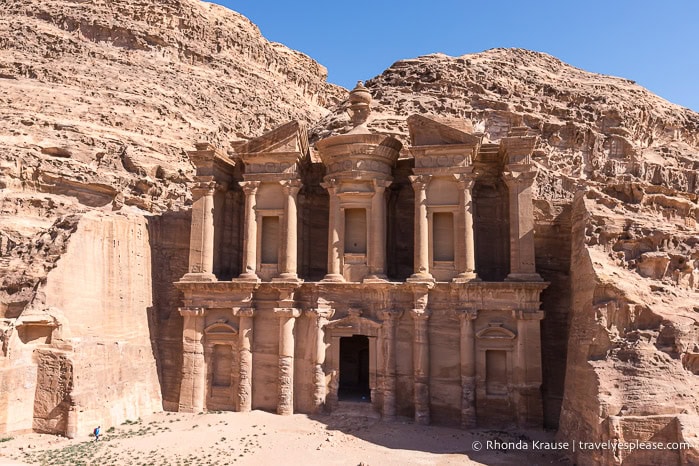
The trail to the Monastery is beautiful with towering walls of red rock framing the route. I loved the rugged geology and views as the trail gained elevation (200 m over 1.6 km and about 800 stairs). Along the way there are vendors selling souvenirs and at the end of the trail there is a cafe.
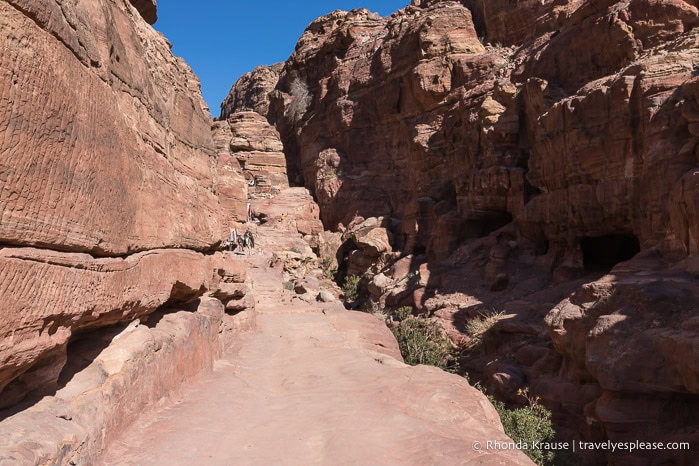
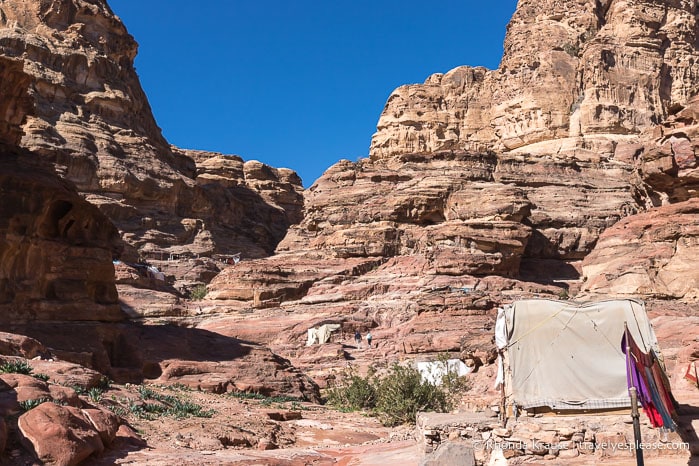
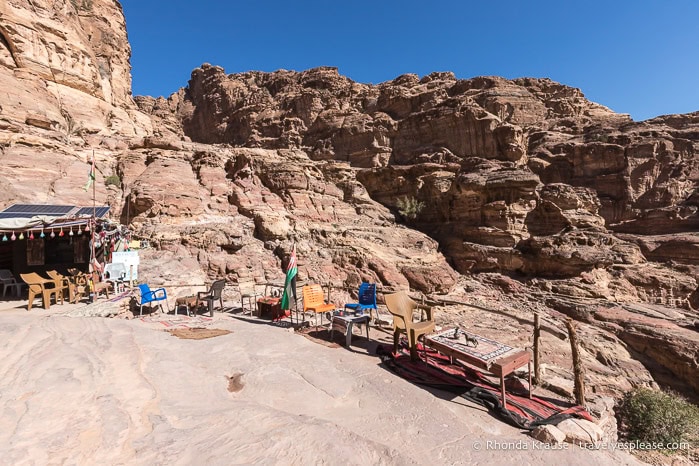
The Monastery dates back to the mid-1st century AD and is one of the largest monuments in Petra. Its rock-cut facade measures 48.3 m high and 47 m wide and features a broken pediment, central tholos crowned by an urn, niches, and ornamental columns. The Monastery is similar in style to the Treasury, but slightly less ornate.

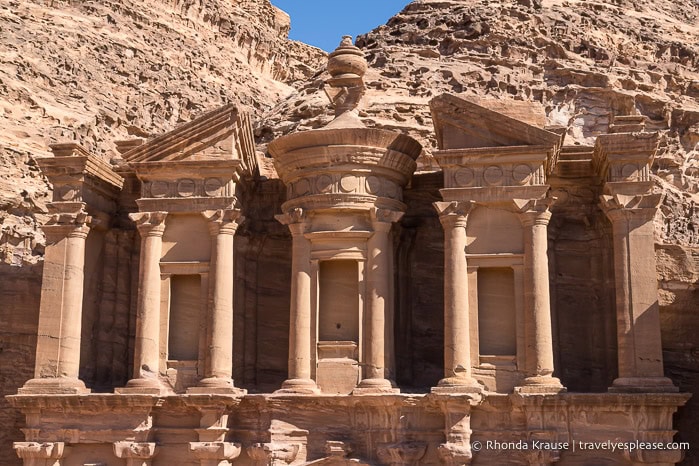
Unlike many other carved structures in Petra, the Monastery was not a mausoleum. Instead, it was likely used as a hall for ritual banquets.
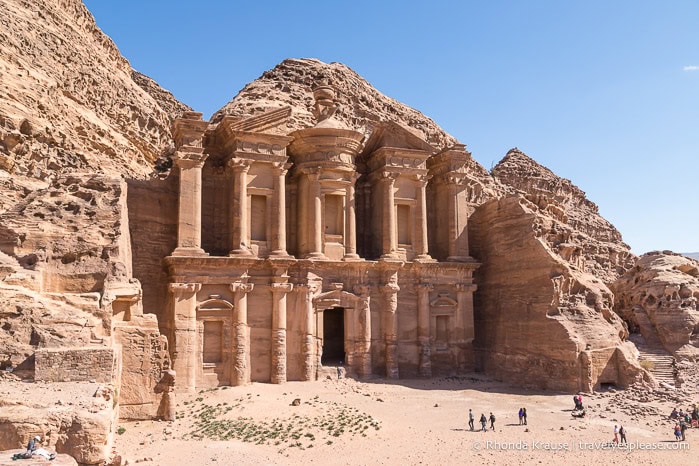
The Monastery was my favourite of all the places I saw during my visit to Petra. I thought its facade was gorgeous and the mountainous backdrop added to its grandeur. I also found the atmosphere more pleasant than the Treasury because there were fewer vendors and tourists milling around in front of the building (I got there before 11:30 am). It’s nice that there are a lot of rocks across from the Monastery where you can sit and admire the view.
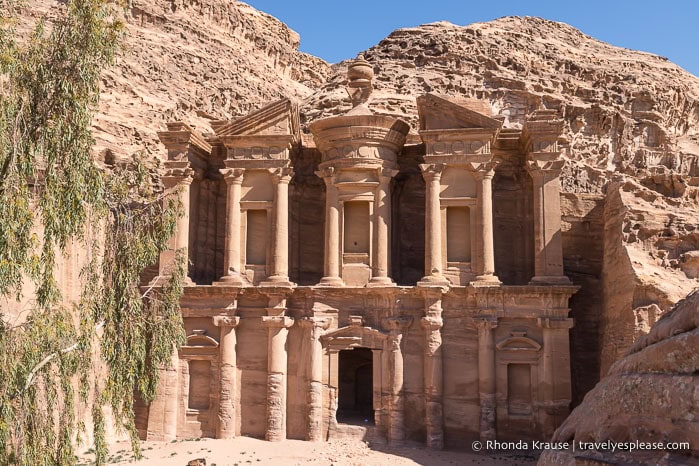
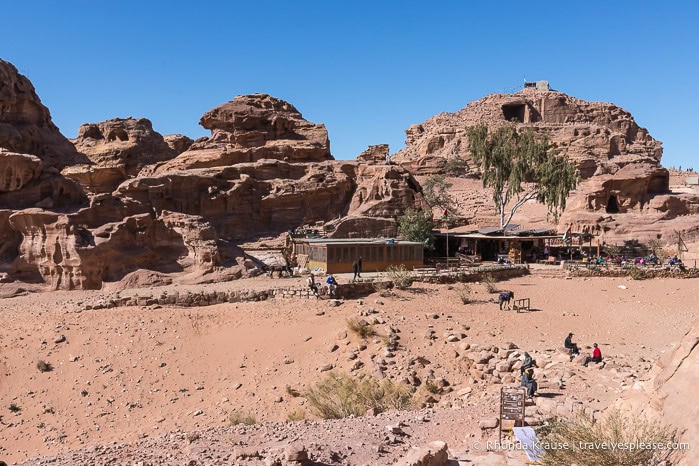
Before heading back down to the city centre, I followed a trail across from the Monastery that went up to the western edge of the cliffs to see a view of Wadi Araba.
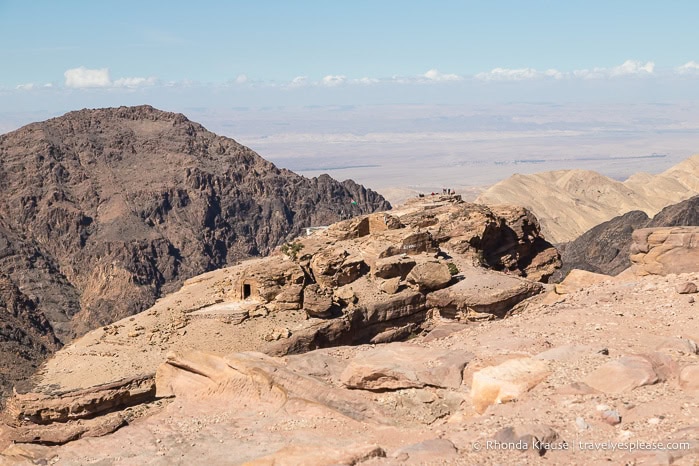
The Great Temple
Back on the Colonnaded Street in the city centre, I stopped for a closer look at the Great Temple.
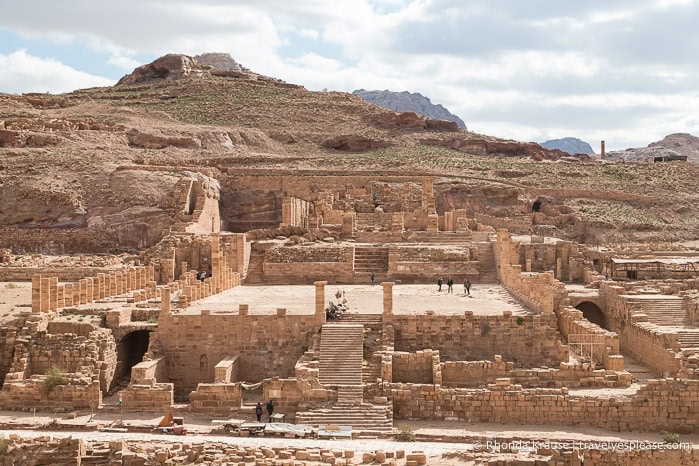
Covering over 7500 square metres on three levels, the ruins of the Great Temple are quite impressive. There is a propylaeum (formal entryway), a colonnaded courtyard, a small theatre, an upper columned hall, a perimeter wall and more.
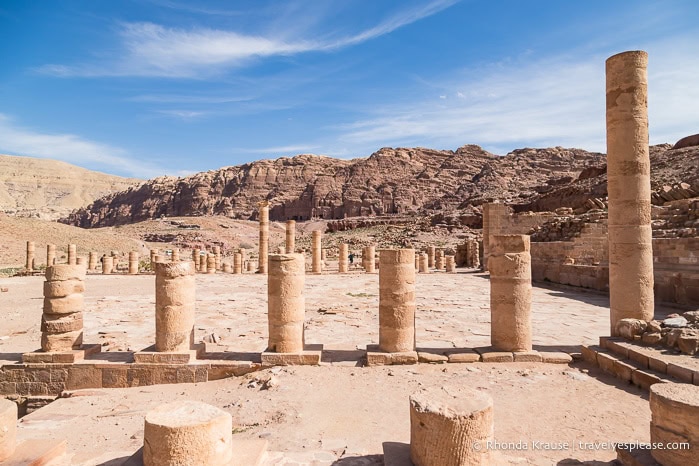
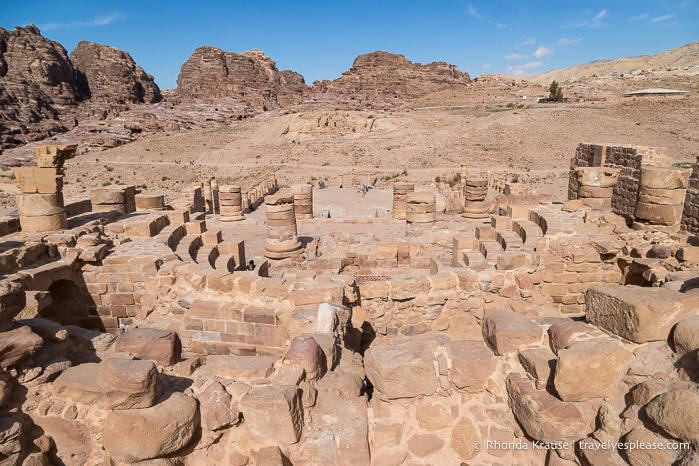
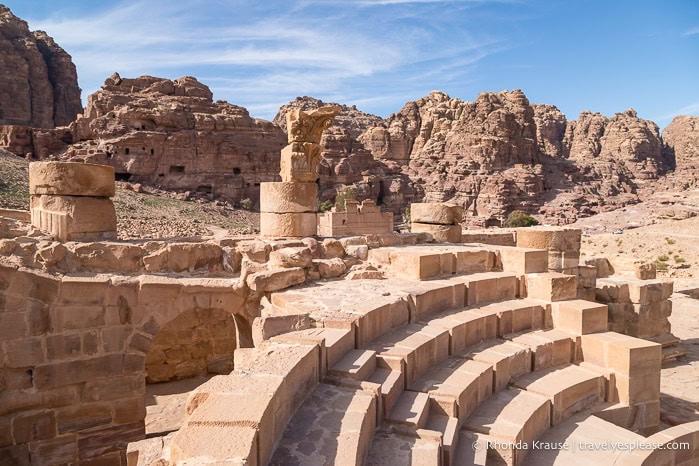
My favourite part was the columns, but the Great Temple also offered nice views of Qasr al-Bint to the west, the Temple of the Winged Lions to the north, and the Royal Tombs to the east.
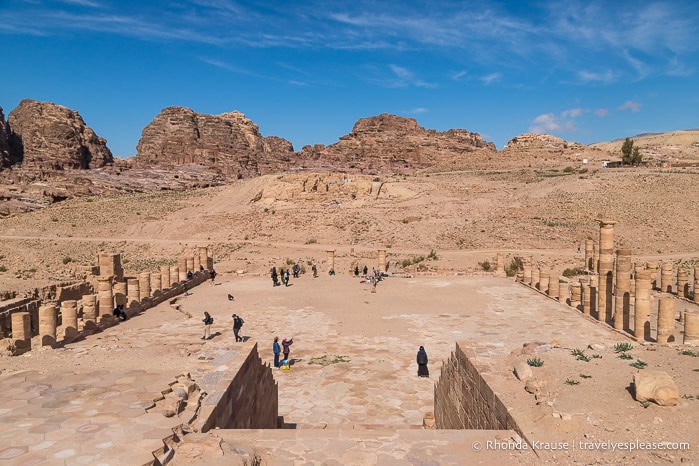
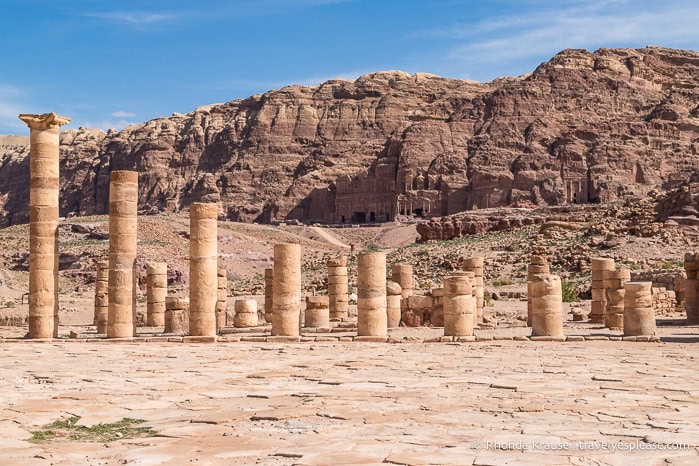
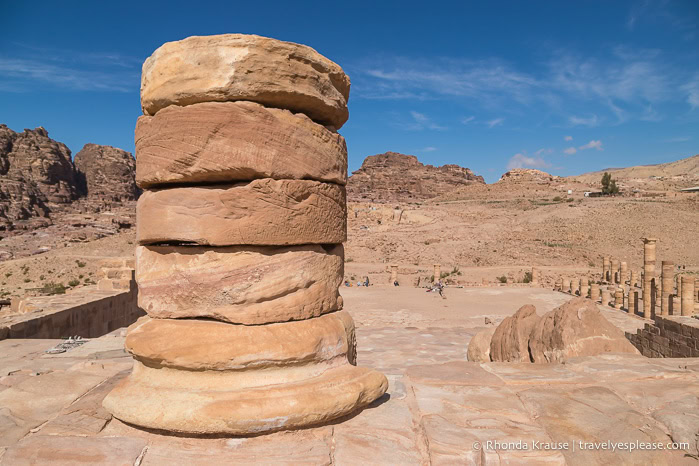
The Royal Tombs
Another highlight of my visit to Petra was seeing the Royal Tombs, a row of mausoleums with magnificent facades sculpted into the Jabal al-Khubtha rock massif.
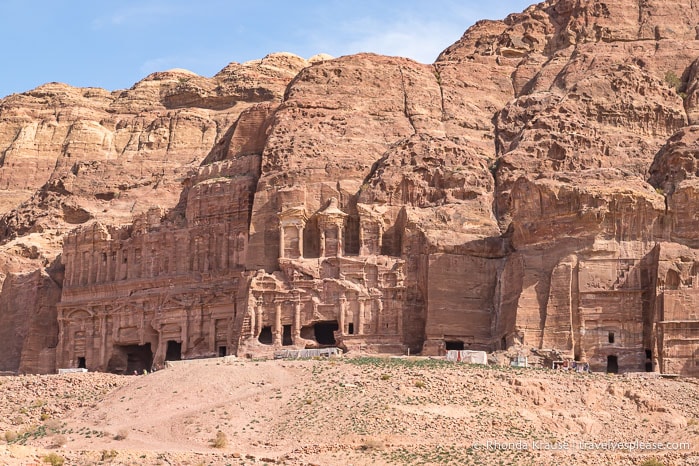
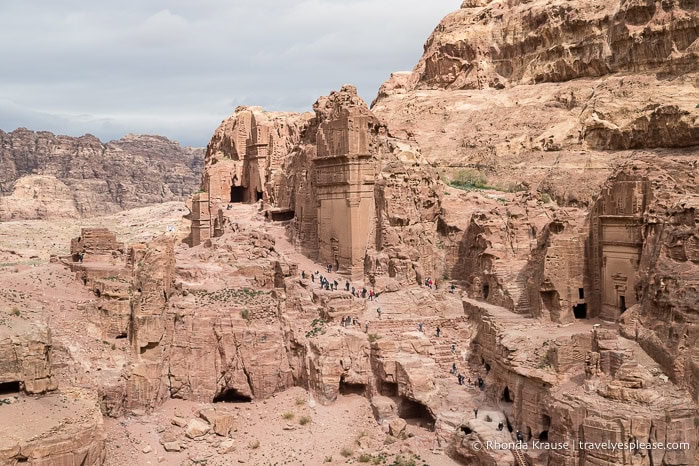
The four Royal Tombs overlooking the city centre are the Palace Tomb, the Corinthian Tomb, the Silk Tomb, and the Urn Tomb (going from north to south down the row).
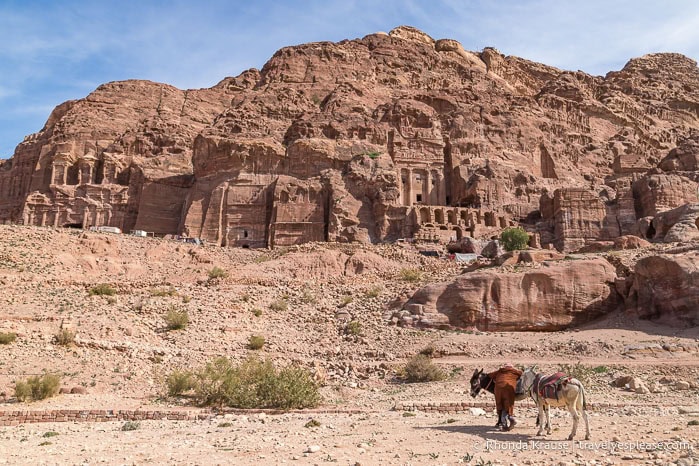
The Palace Tomb is my favourite because of its lavish three-storey facade decorated with pilasters, entablatures, and pediments. The facade is also one of the largest in Petra, being close in size to the Monastery. The tomb has four interior burial chambers with niches carved into the walls.
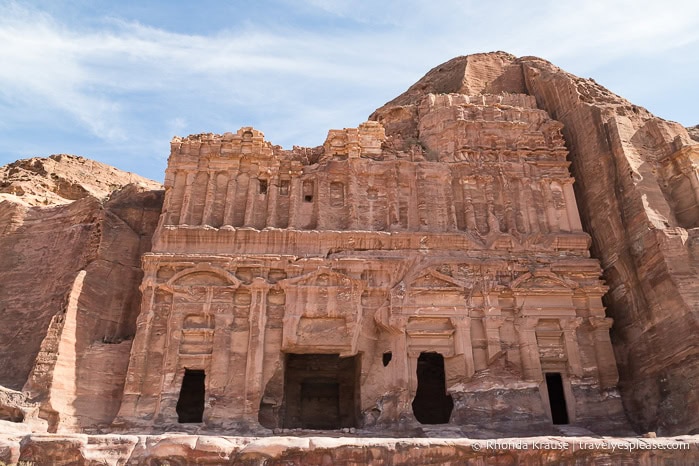
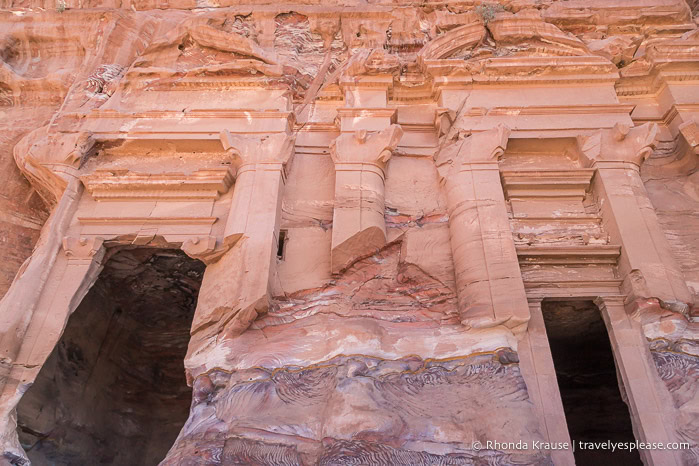
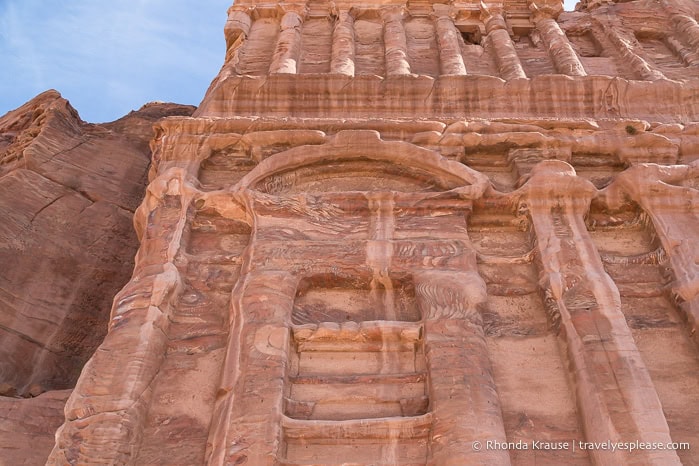
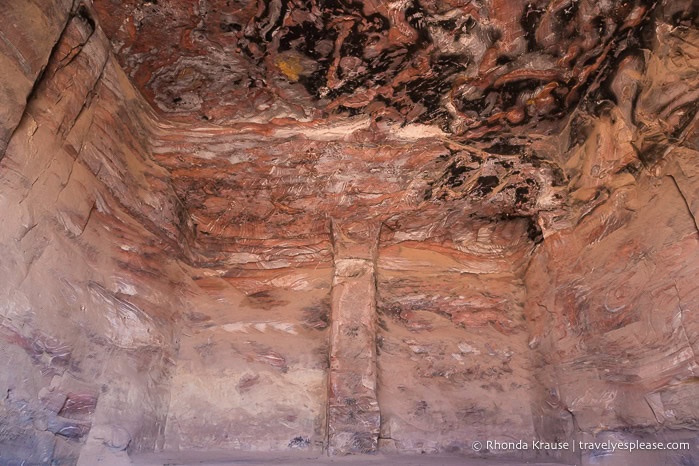
The Corinthian Tomb, named so because of its capitals, is similar in design to the Treasury but far more eroded. One interesting thing I noticed about this tomb is that the placement of doors and windows is not symmetrical.
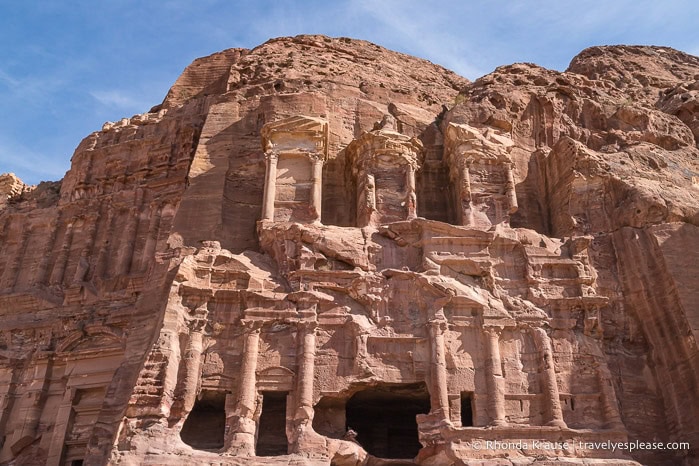
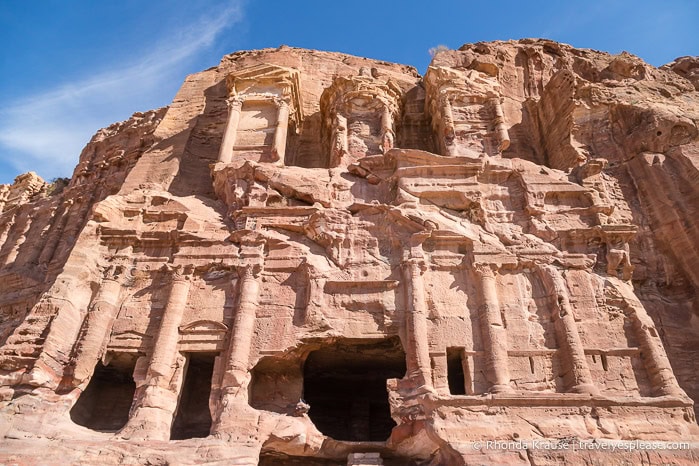
The Silk Tomb’s defining feature is the ribbons of coloured rock on its facade. Other architectural elements include mouldings, pilasters, and a frieze of steps.
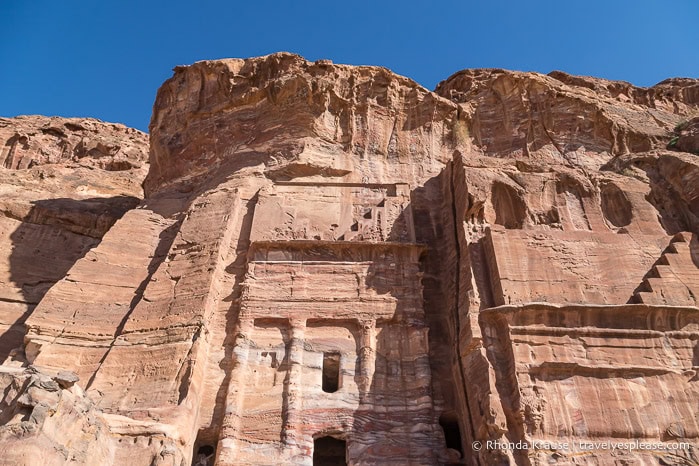
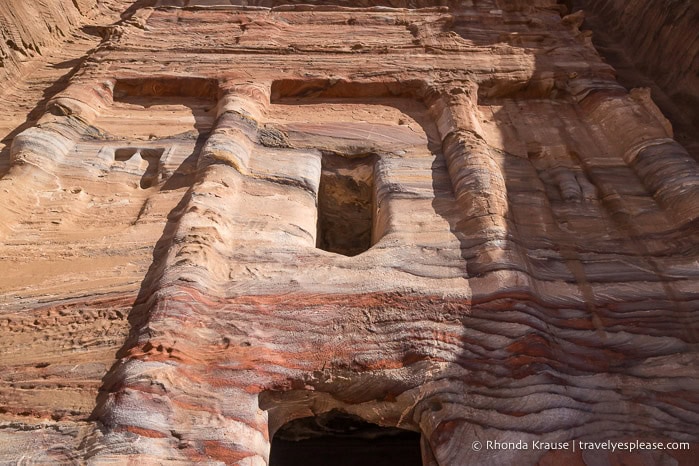
The Urn Tomb stands out among the Royal Tombs because it’s carved far back into the rock to make room for a colonnaded courtyard. The tomb’s facade has columns, a worn entablature with bust-reliefs on the frieze, and a triangular pediment topped with an urn. The staircase to the tomb is supported by arched vaults.
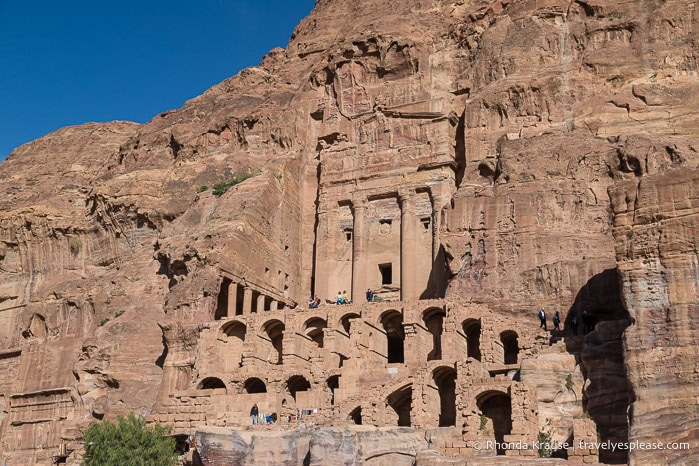
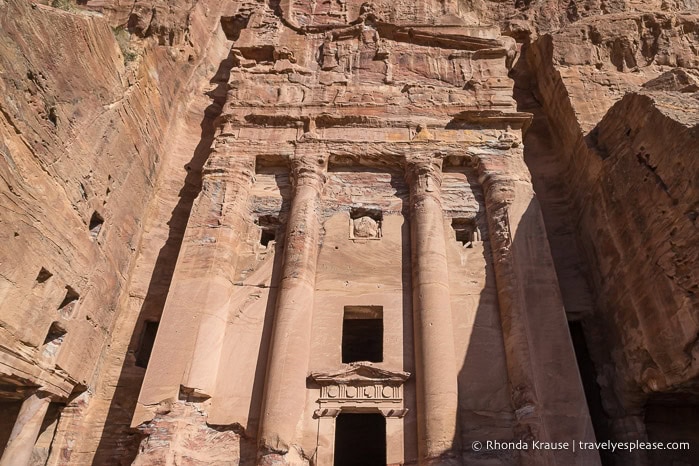
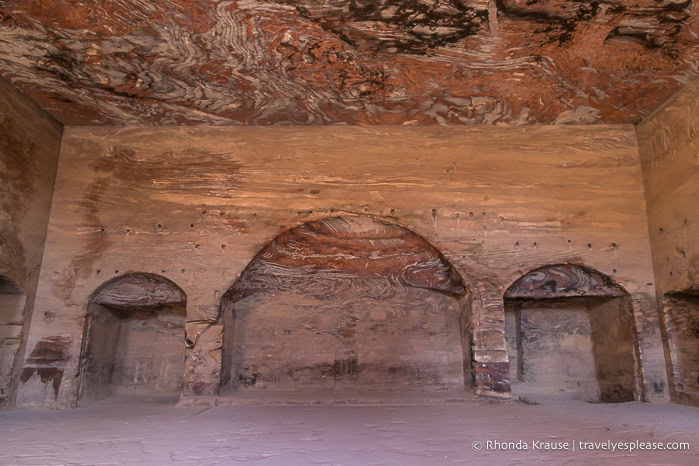
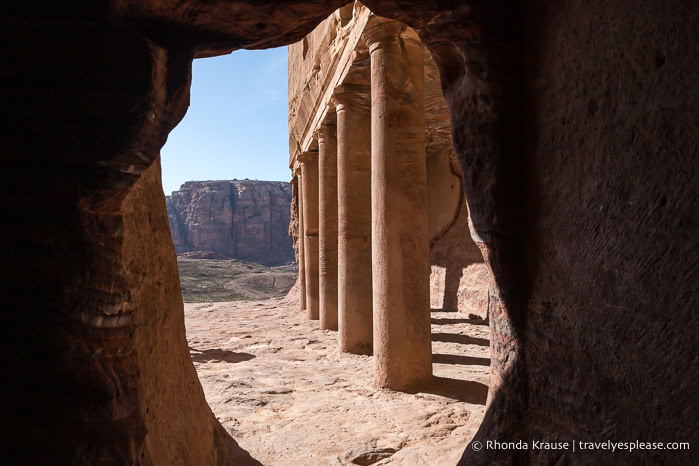
Unayshu Tomb
After the Royal Tombs, I kept walking along the slope of Jabal al-Khubtha and came across some more tombs before eventually arriving at Unayshu Tomb.
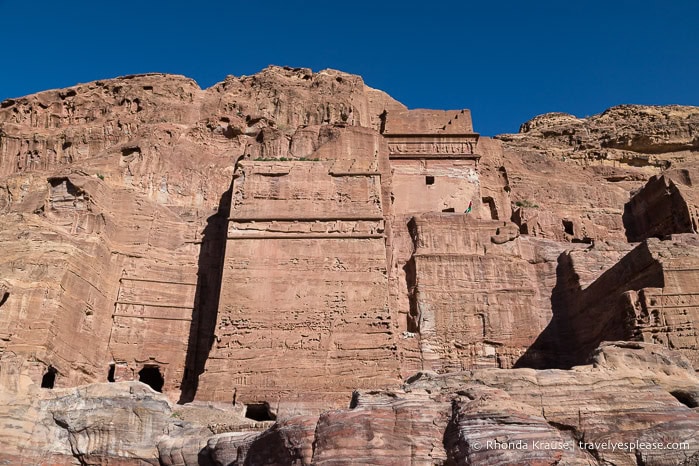
Unayshu Tomb has two sets of steps at the top of the facade but is overall plainer than the others carved into this rock massif.

From the tomb, I followed the stairway back to the Street of Facades and made my way to the park exit satisfied with my first day visiting Petra!
Day 2: Hike to the Treasury Viewpoint and High Place of Sacrifice, Visit More Ruins
The second day of my Petra itinerary included two hikes. The first hike was on the Al-Khubtha Trail to see the Treasury from above. The second hike was on the High Place of Sacrifice Trail. Afterwards, I visited two more ruins in the city centre- the Temple of the Winged Lions and the Church- to conclude my Petra visit.
Hike Al-Khubtha Trail
One of the things I most wanted to do during my 2 days in Petra was see the Treasury from above. There are two high viewpoints you can hike to (and a short walk to a lower one), but the official viewpoint is at the end of Al-Khubtha Trail.
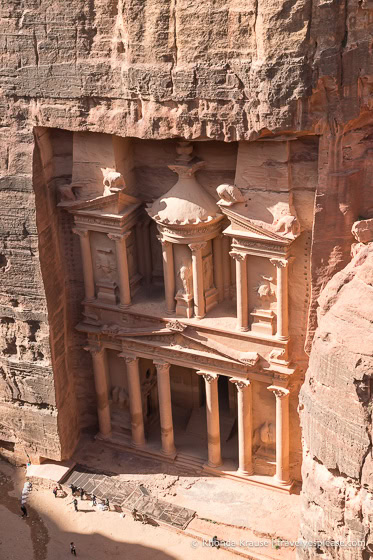
The official Treasury Viewpoint Trail (Al-Khubtha Trail) starts in front of the Palace Tomb then turns to ascend Jabal al-Khubtha via a series of stairs. During the 3 km round trip hike there are wonderful views of the theatre, city centre, and surrounding landscape.
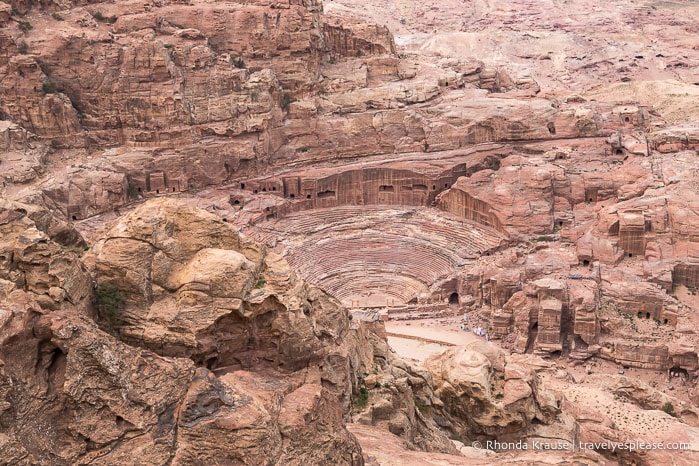
At the end of the trail, there is a Bedouin tent you can enter for free to enjoy an incredible view of the Treasury from above. If you want, you can purchase a drink from the Bedouin family to enjoy while admiring the view. I had some delicious freshly squeezed pomegranate juice.
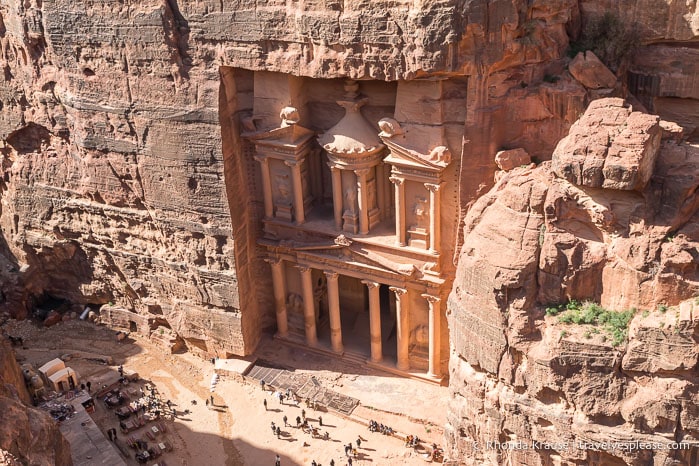
I loved seeing the Treasury from a different vantage point in a quiet spot away from the crowds. Having this amazing view all to myself was the most special moment of my trip to Petra!
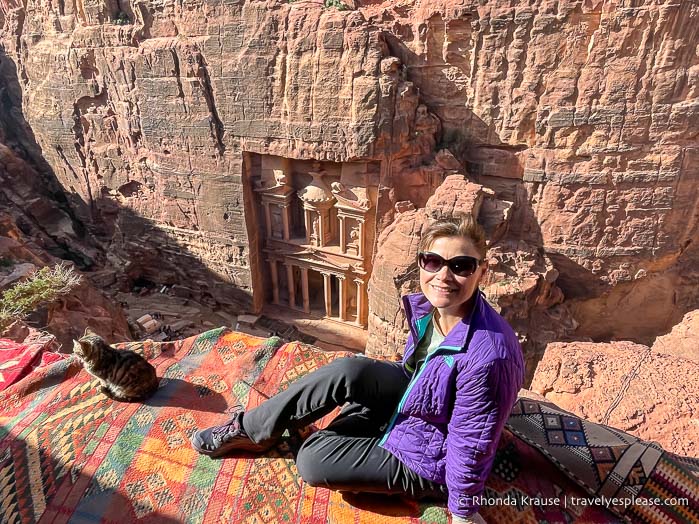
Hike the High Place of Sacrifice Trail
The High Place of Sacrifice Trail is an interesting hike that leads to a viewpoint above the city centre.
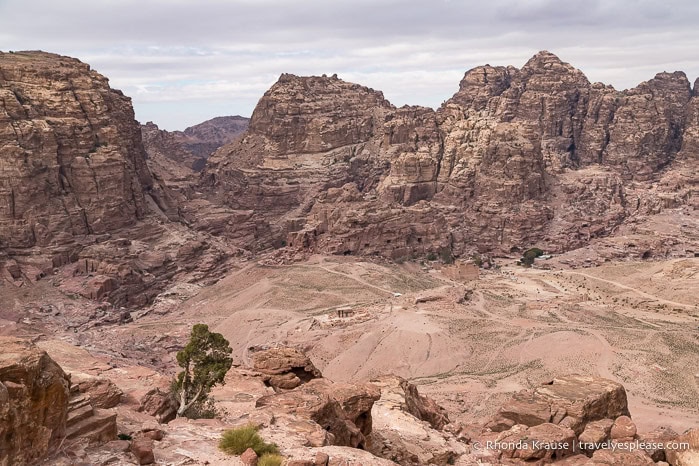
Starting beside the Theatre Necropolis on the Street of Facades, the trail climbs some stairs between rock walls to the High Place of Sacrifice. At the plateau, there is an altar and panoramic views of the city centre. I especially liked seeing the Royal Tombs from an elevated perspective.
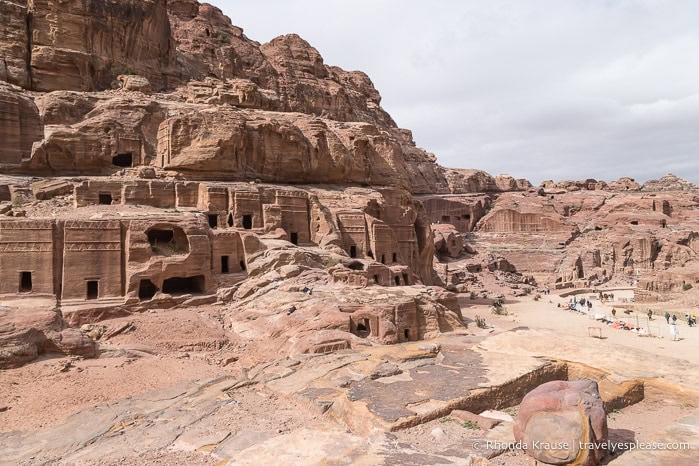
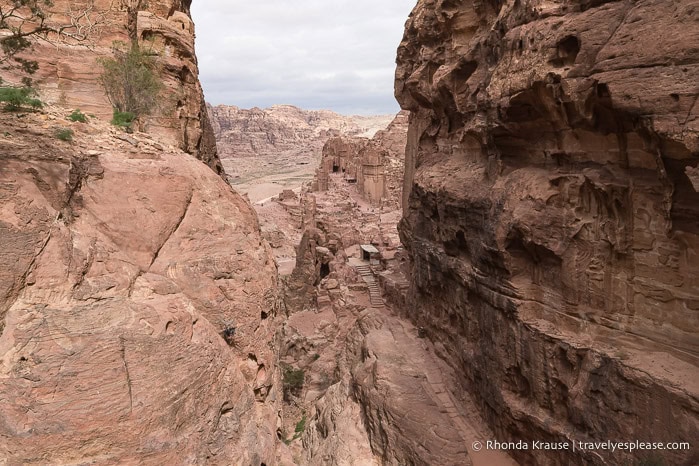
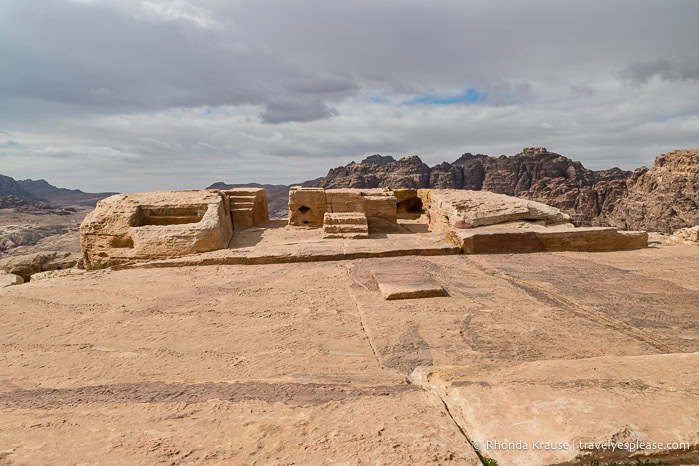
After the High Place of Sacrifice, the trail continues down into Wadi al Farasa where there are some interesting attractions including the Lion Fountain, the Garden Triclinium, and the Roman Soldier’s Tomb. The hike finishes near the west end of the Colonnaded Street.

Temple of the Winged Lions
After my hike, I walked up the slope on the north side of the Colonnaded Street to briefly visit the ruined Temple of the Winged Lions.
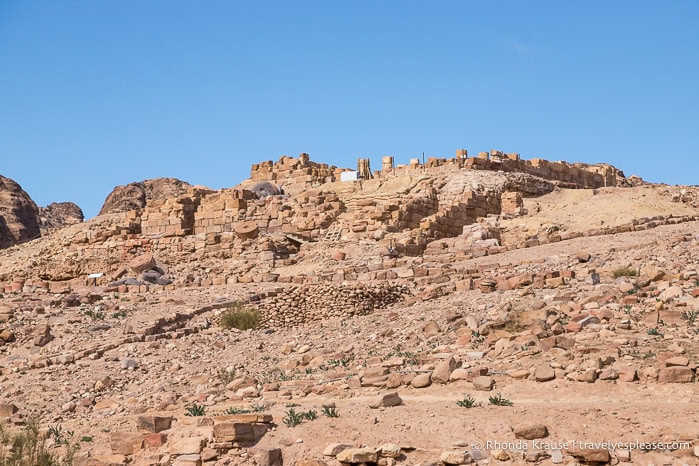
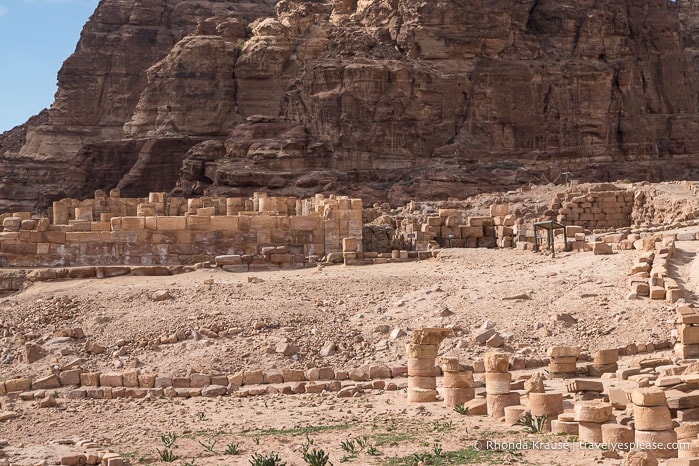
What has been excavated are some stone walls, arches of a vaulted terrace, large circular drums from a pair of collapsed columns, and the central podium in the inner sanctuary. The temple’s name was inspired by the winged lion capitals that were found by archaeologists.
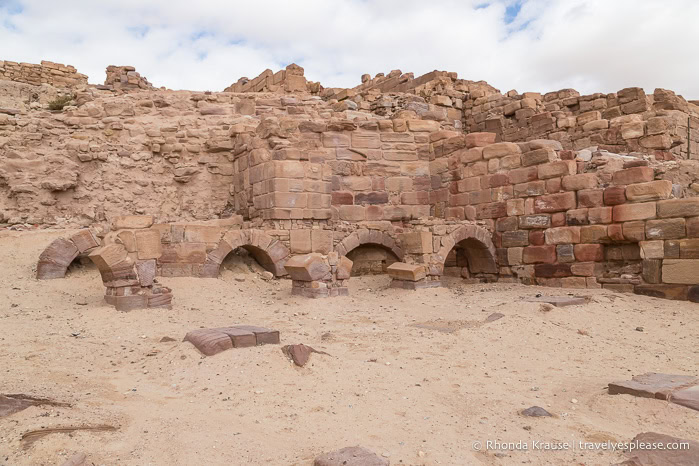
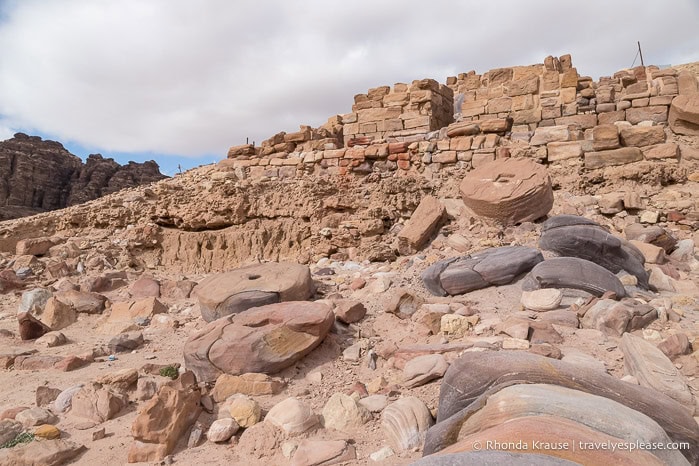
Byzantine Church
I concluded my Petra visit with a stop at the Byzantine Church.
The church was built around the end of the 5th century AD with materials from other buildings in Petra that had fallen after an earthquake. The church would also later suffer damage from earthquakes and fire, but remarkably the floor mosaics on both side aisles were preserved. The mosaics mostly depict animals, both mythological and exotic.
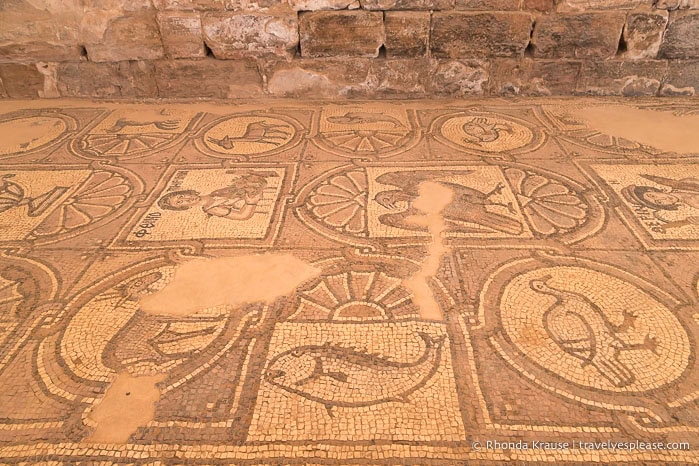
The floor tiles are the highlight of the church but there also is a baptistery that has been preserved.
Would I Change Anything About My 2 Day Petra Itinerary?
There are so many outstanding things to do in Petra that I was glad I allocated 2 days of my Jordan itinerary to explore the archaeological park.
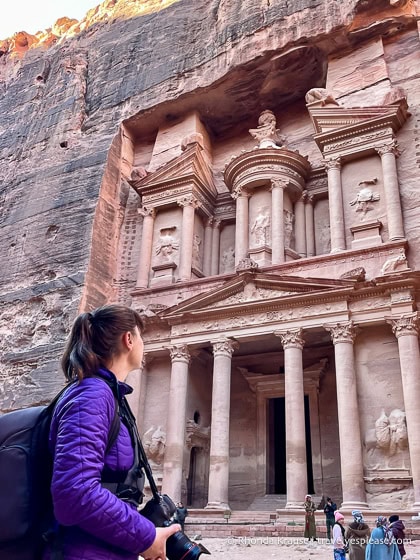
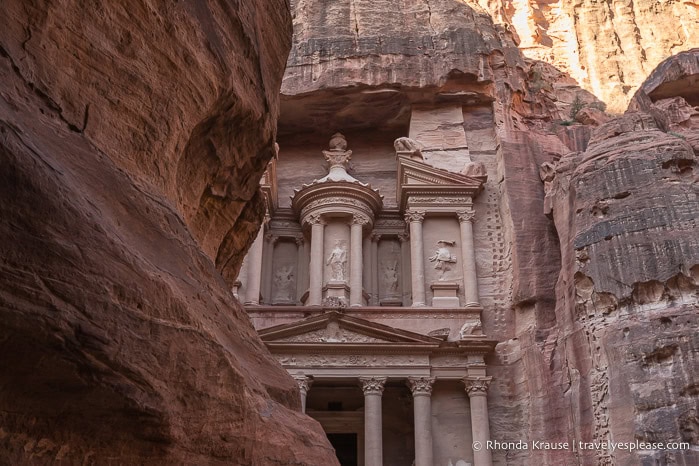
I thought that 2 days in Petra were needed to do the site justice because there is so much more to experience beyond the top attractions. I loved having an extra day to hike some trails and visit ruins and viewpoints that most tourists don’t go to.

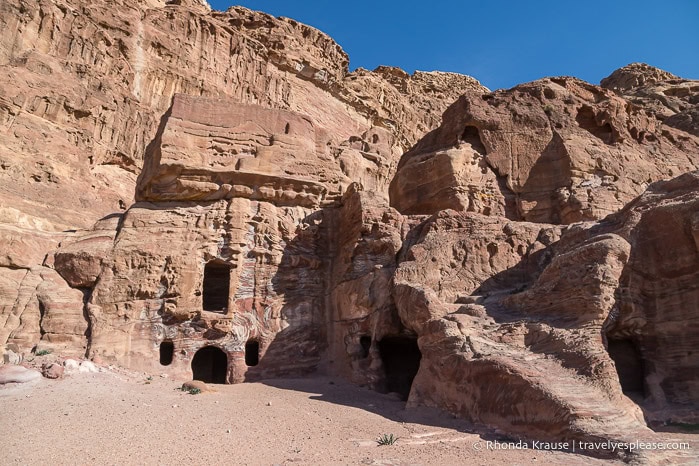
Even with 2 days, I didn’t fit everything there is to see into my Petra itinerary (I missed out on the museum). Overall, I felt like 2 days in Petra was the perfect amount of time and that another day would have been more of the same without anything unique to offer.
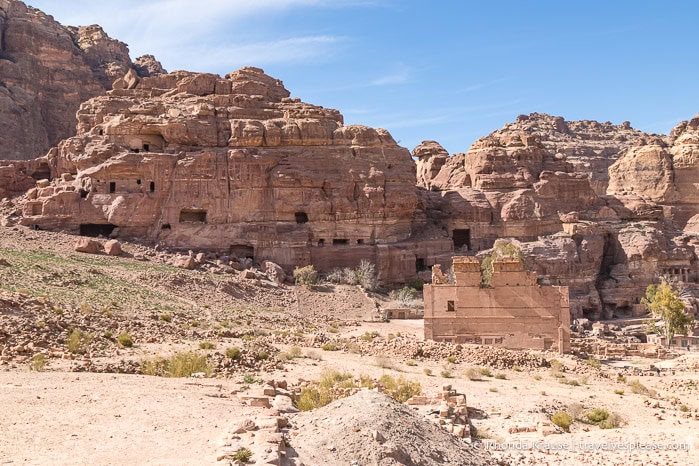
Final Thoughts About Visiting Petra
My first trip to Jordan was inspired by wanting to visit Petra and it did not disappoint. It was such a unique destination and I was so impressed with the sculpted facades in the rocks. The size of the tombs and monuments and their decorative details were extraordinary, even with the weathering of time.
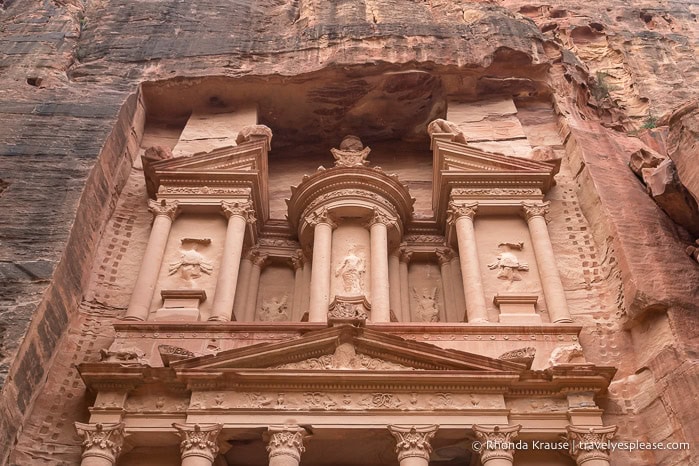
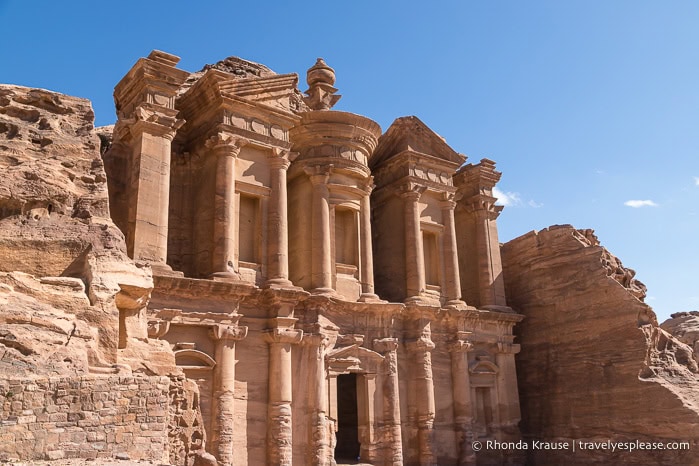
As much as I enjoyed visiting Petra, the park had some downsides. The hiking trails were not well-signed in places and there were a few times I questioned which way to go/trail to follow when there was more than one option (especially near the end of the High Place of Sacrifice Trail). I also wished there were more information panels at the tombs and monuments (only a few had them). Most upsetting was the litter and the animal exploitation. I don’t like to see horses, donkeys, and camels working so hard to transport tourists.
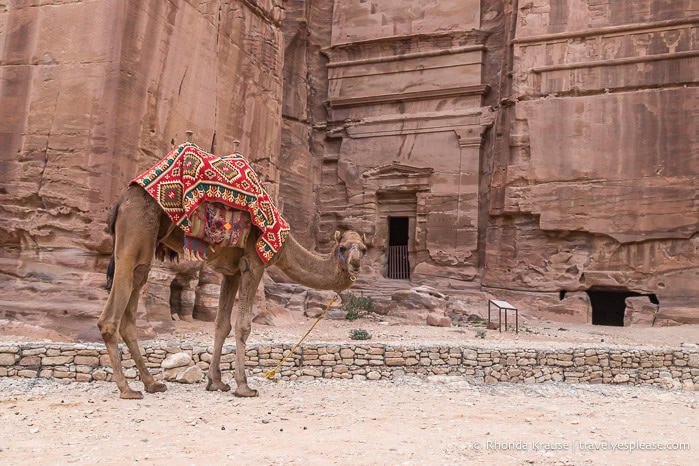
Another thing to be aware of is that the local bedouins can be aggressive when trying to sell you something or get you to ride their animal. I had one incident with a lady on the Monastery Trail who was really aggressive and rude when I didn’t stop to look at her shop when hiking by. The bedouins have also taken over two of the three treasury viewpoints and won’t let you pass unless you pay them to “guide” you. The official and free viewpoint is at the end of Al-Khubtha Trail and you won’t be forced to have a local accompany you.
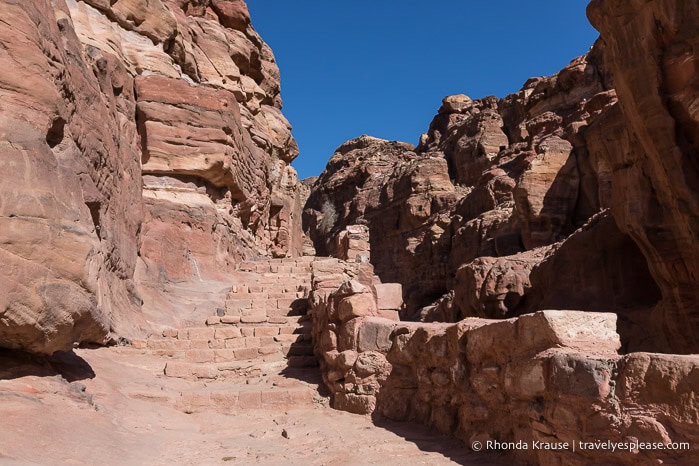
I really enjoyed my 2 days in Petra and am thankful that I had enough time to experience more than just Petra’s highlights.
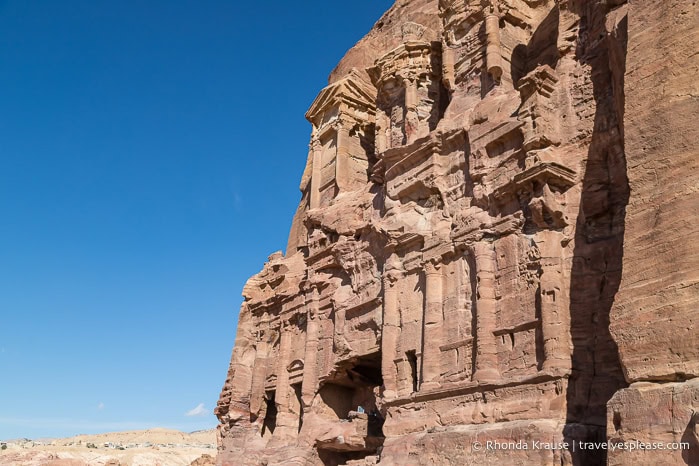
More Pictures of Petra
Here are a few more pictures I took during my visit to Petra.
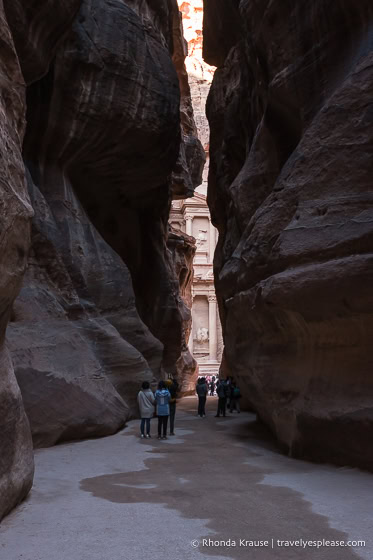
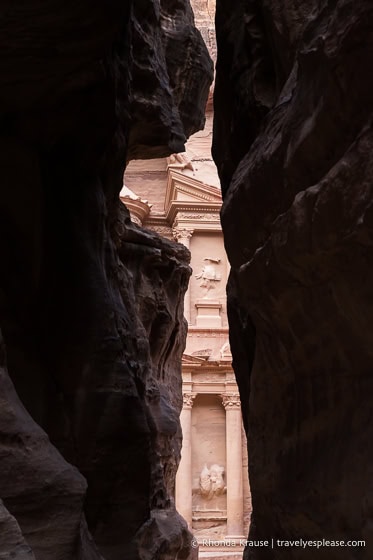
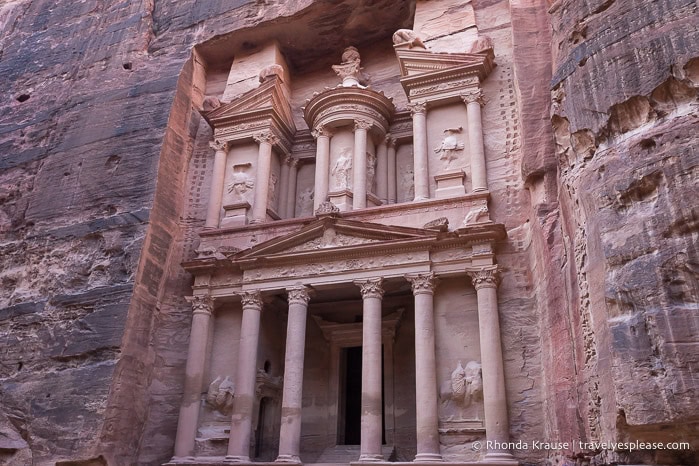
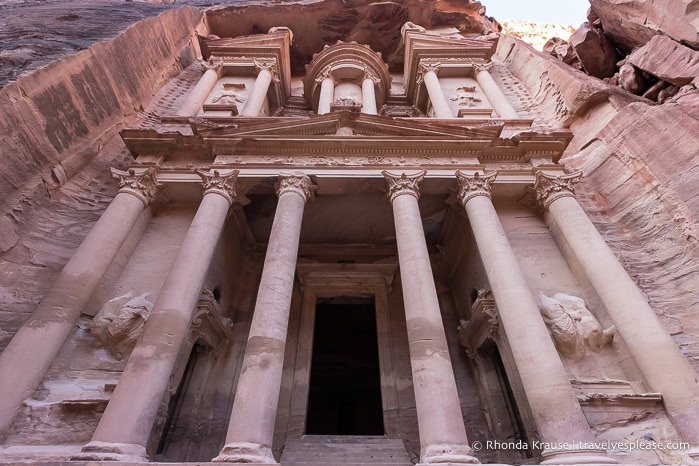
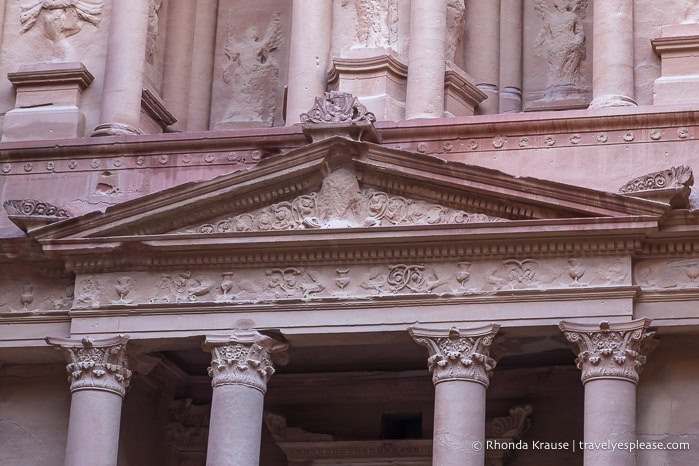
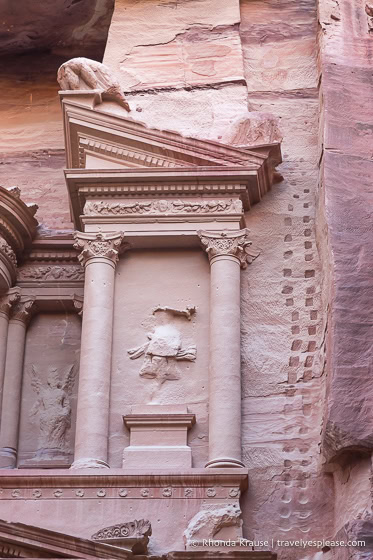
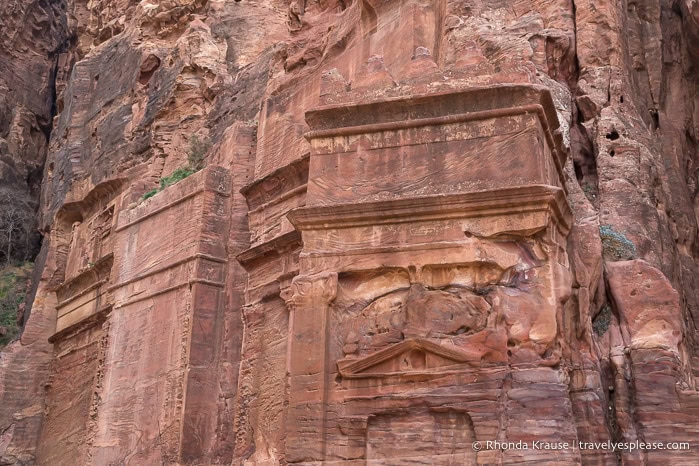
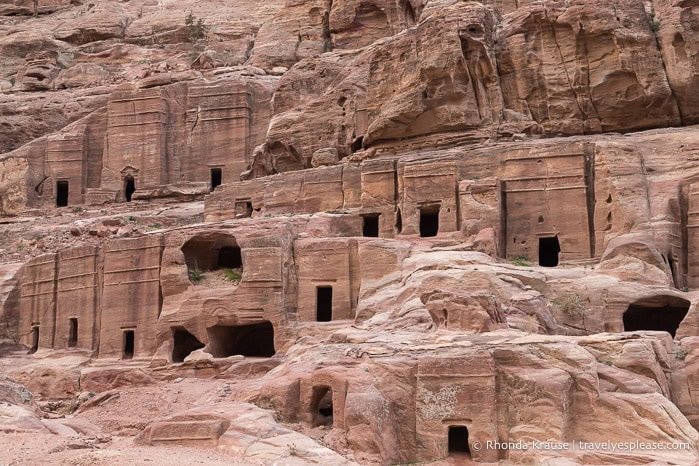
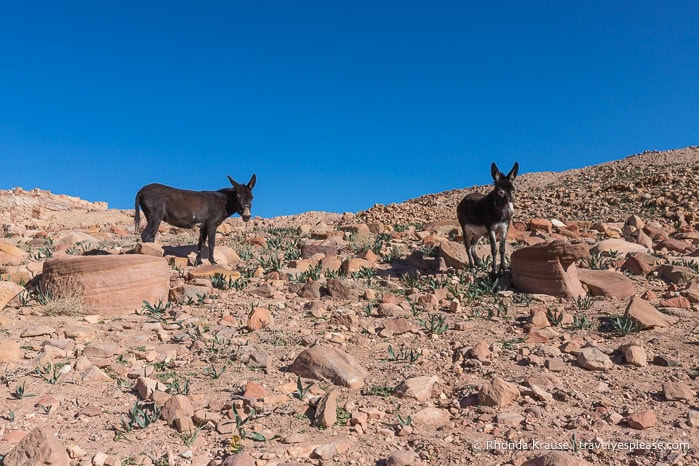
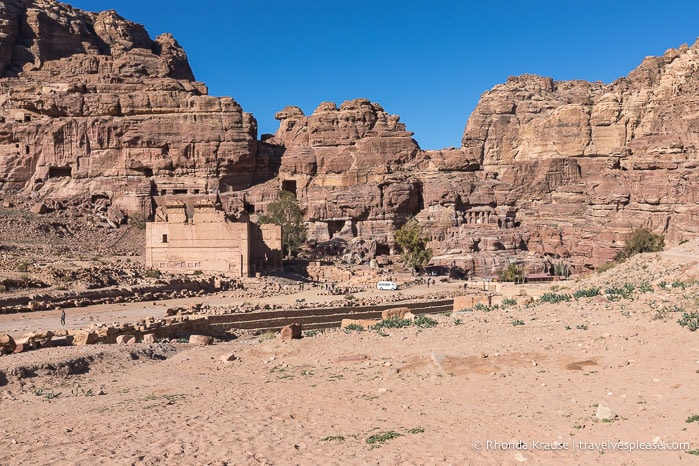
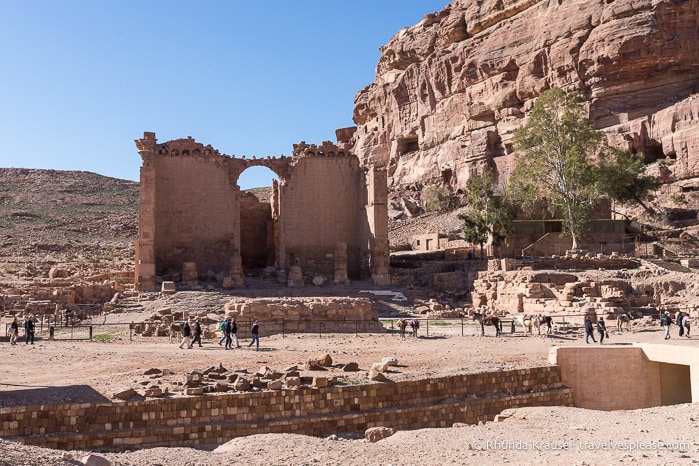
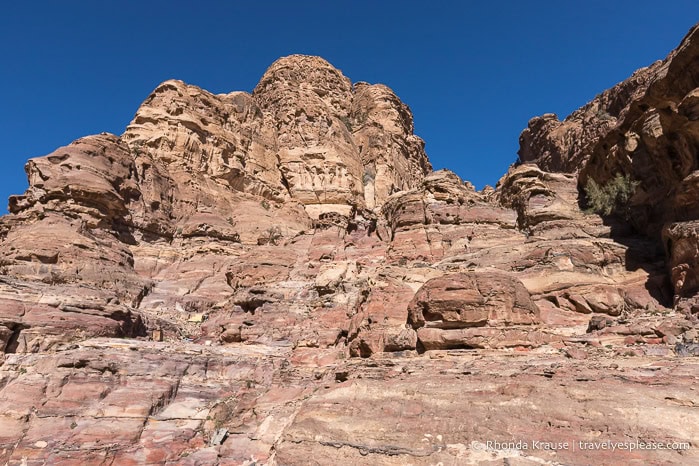
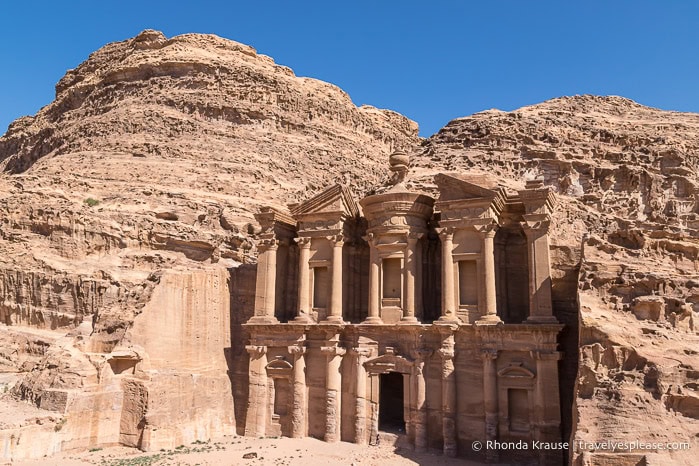
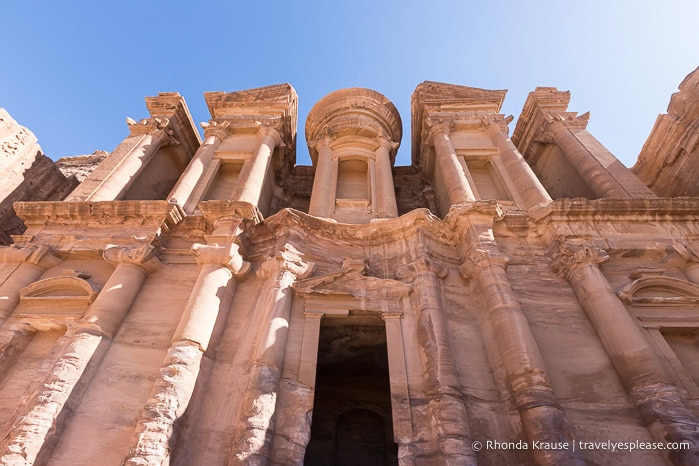
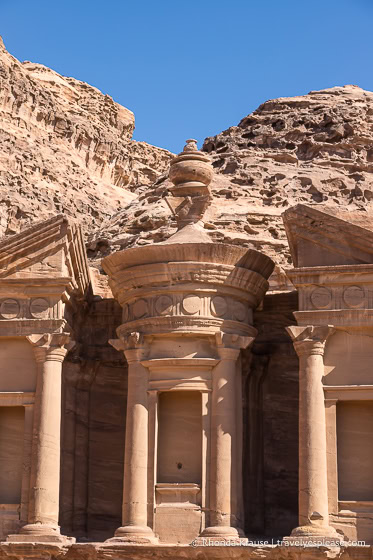
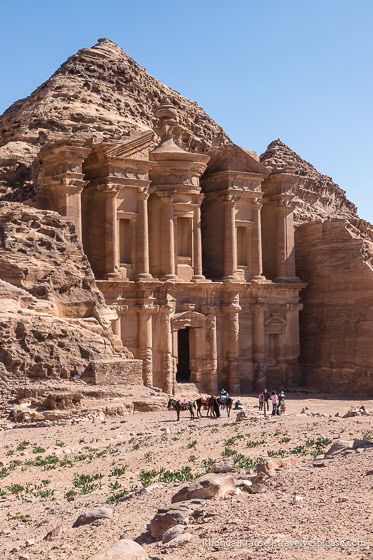
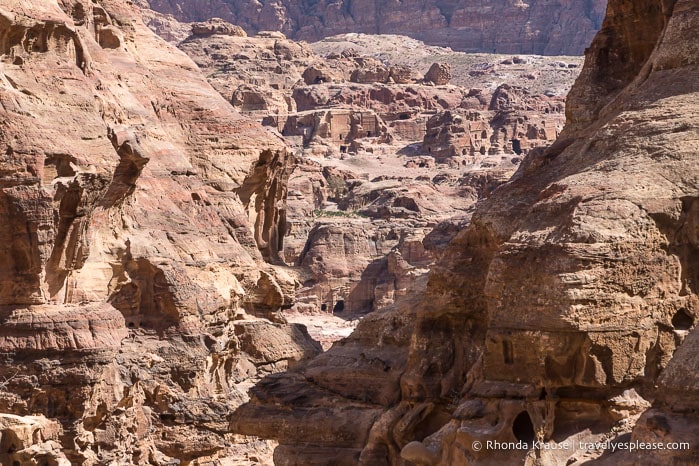
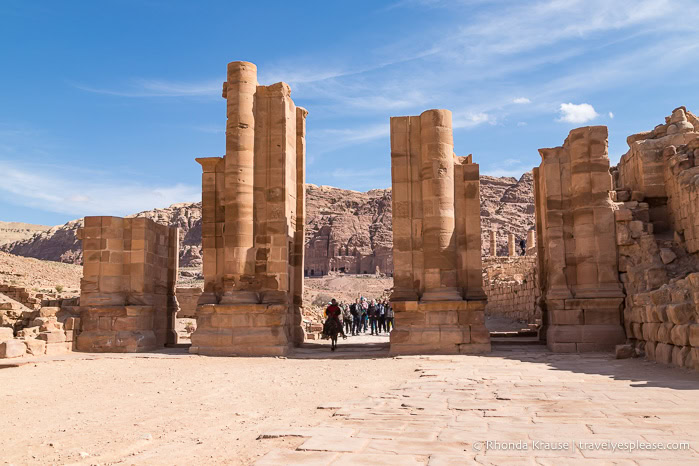
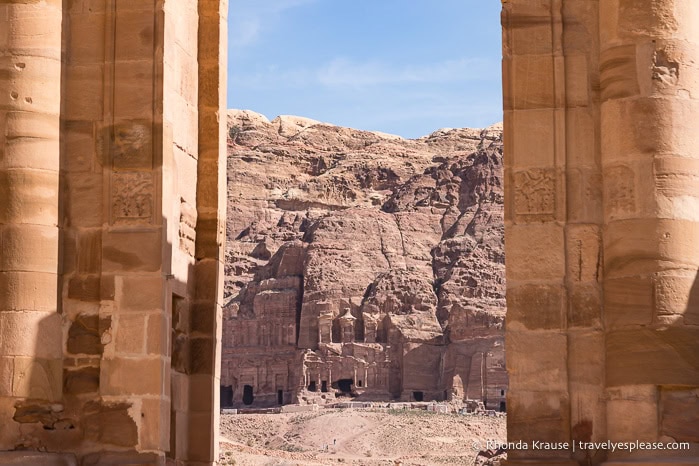
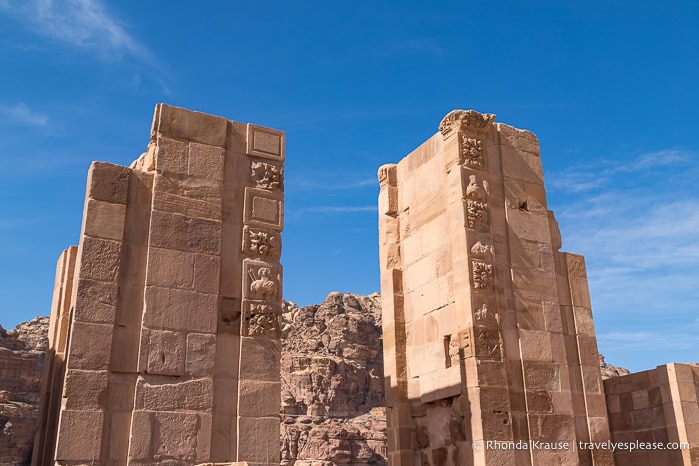
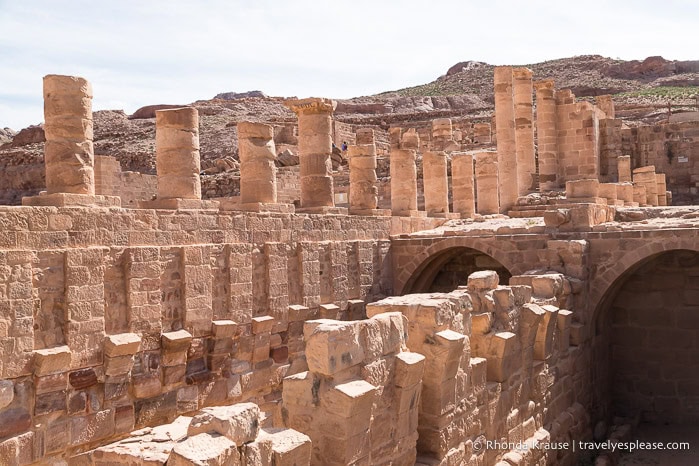
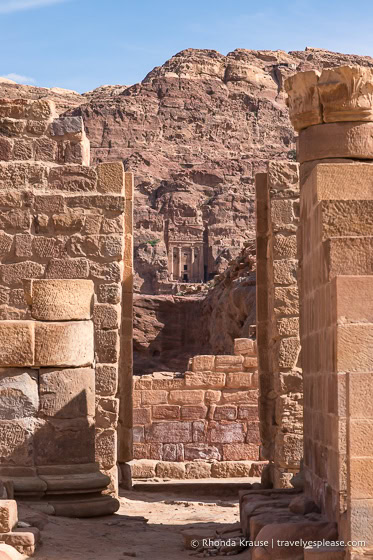
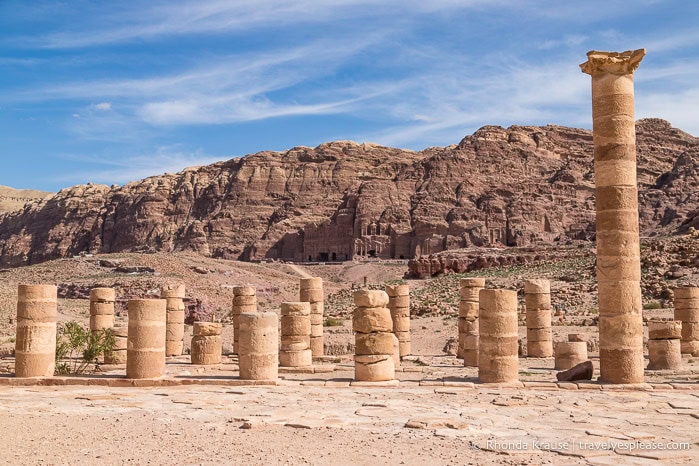
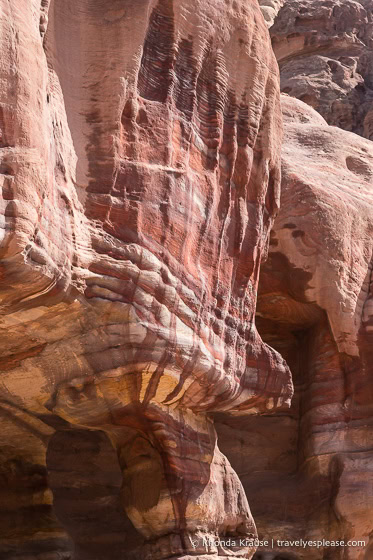
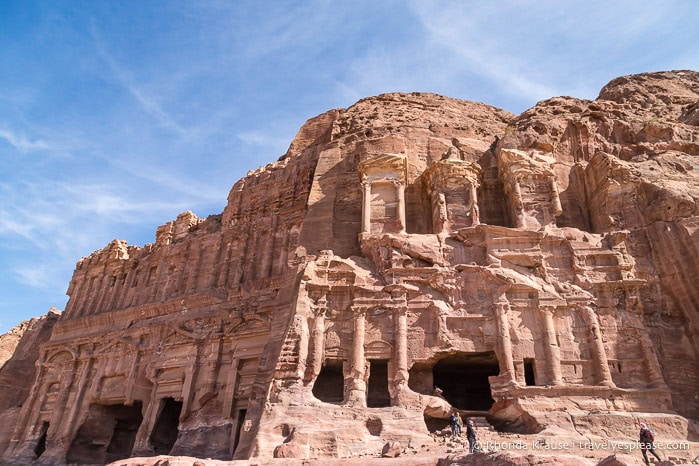
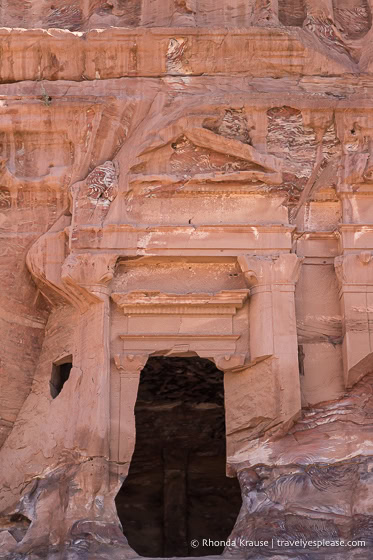
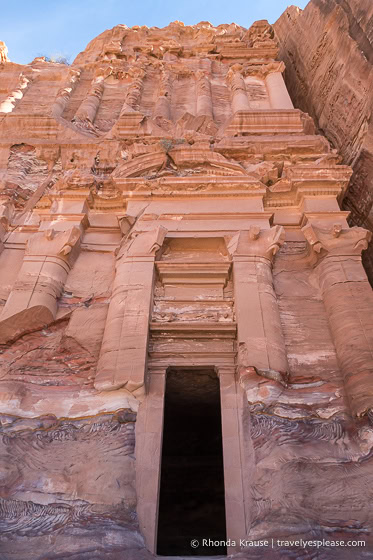
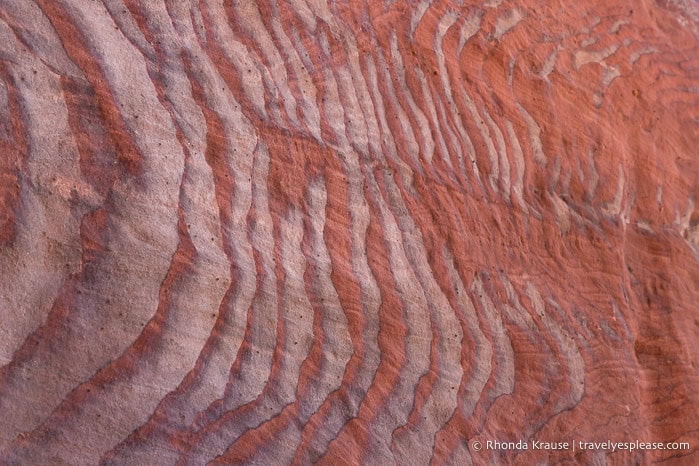
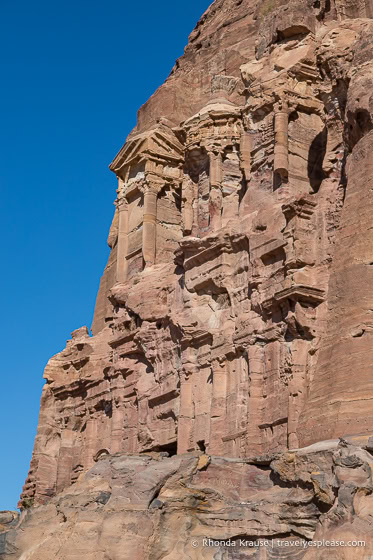
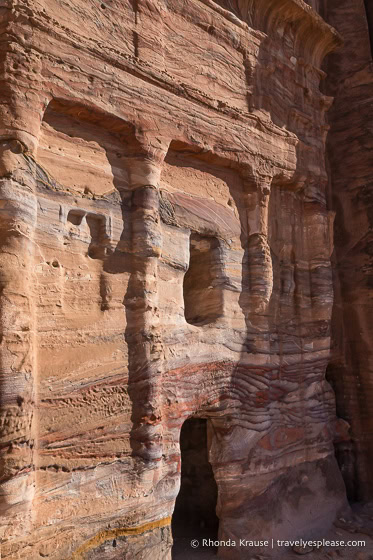
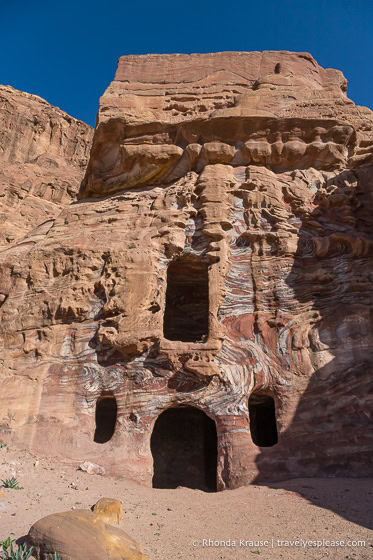
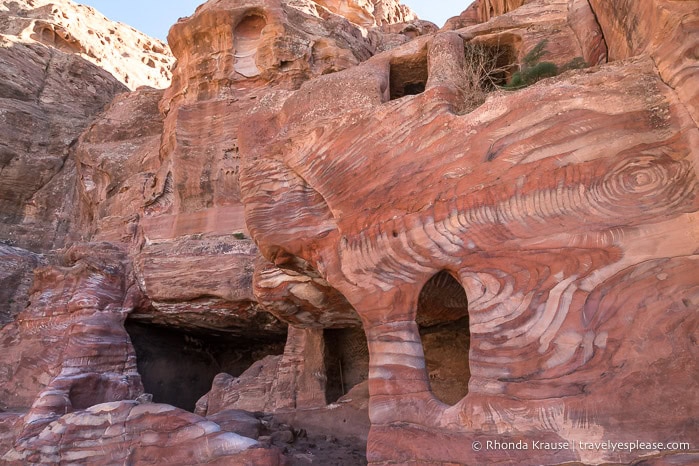
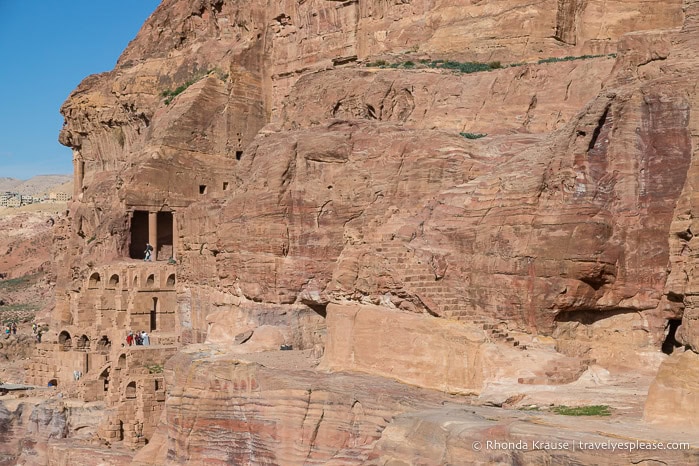
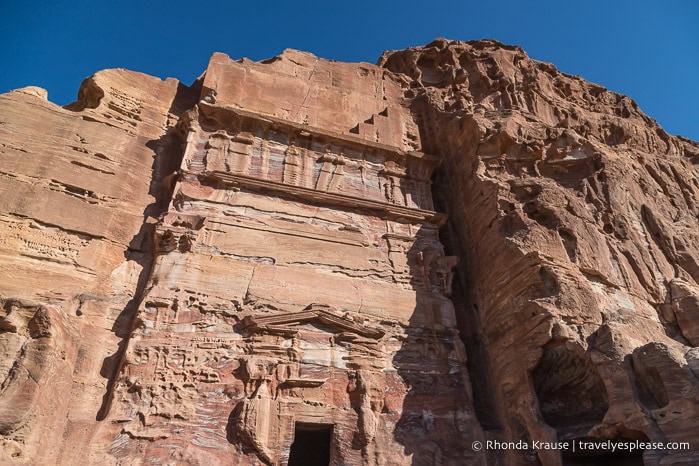
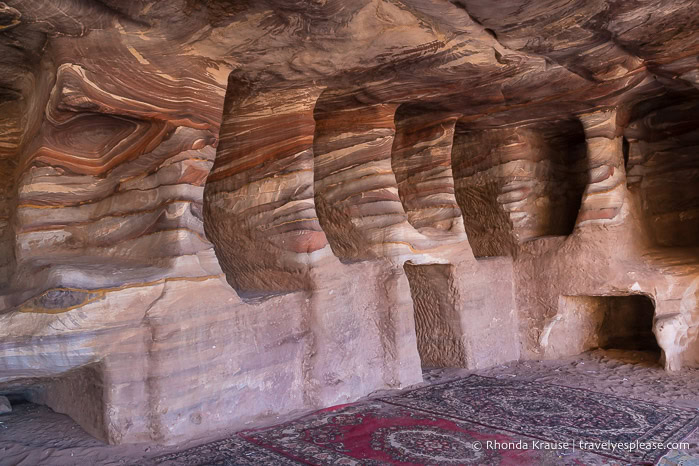
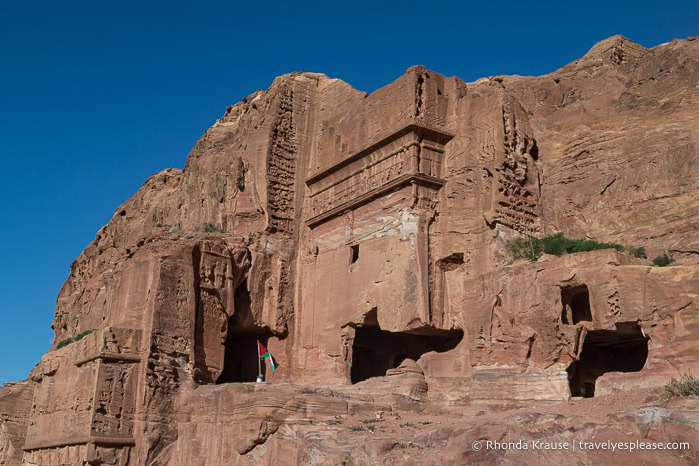
Tips for Visiting Petra
Entrance Tickets: The main entrance to Petra is at the Visitor Centre. Here you can buy entry tickets for 1, 2, or 3 days. Current prices can be found here. Bring a copy of your passport with you because you might have to show it when buying your ticket.
Opening Hours: The archaeological site and Visitor Centre open at 6:00 or 6:30 am and close at 5:00 or 6:00 pm depending on the season. Confirm current opening hours here.
Guides: A guide is not needed to visit Petra, but if you prefer to have one you can hire a licensed guide at the Visitor Centre.
Best Time to Visit Petra: The most comfortable time to visit Petra is in the spring (March to May) and autumn (September to November) when the weather is mild. However, this is also high season so the park will be more crowded.
- I enjoyed visiting Petra in early February. The mornings and evenings were chilly, but the days were mild with temperatures perfect for walking long distances. The best part was that there weren’t big crowds of tourists because it was low season.
Amenities: There are two restaurants at the start of the Monastery Trail, some cafes/kiosks throughout the park, and many souvenir stalls selling low-quality items. There are public restrooms along the main trail that are free to use, relatively clean, and usually have toilet paper (I always bring my own just in case).
What to Bring: I recommend bringing plenty of water, a bagged lunch, and some snacks since the food selection is limited and I’ve heard that the restaurants are average (I never tried them). Bring cash.
What to Wear: Make sure to wear sturdy shoes that you are comfortable walking long distances in. Wear layers since the days can get hot but the nights can be cold. In Jordan, it’s generally a good idea to dress a little more conservatively in hot weather than you normally would, but because Petra is so touristic it’s more acceptable to wear shorts and a tank top.
Walking Distances: Be prepared to do a lot of walking when visiting Petra. Here are some approximate distances according to Google Maps:
- Petra entrance to the Treasury- 2 km
- Petra entrance to the Basin Restaurant (at the end of the Colonnaded Street)- 3.8 km
- Petra entrance to the Monastery- 5.4 km
Petra by Night: The Petra By Night event takes place every Monday, Wednesday and Thursday evening. It requires a separate ticket that can be bought at the Visitor Centre. Current prices and event times can be found here.
- If you want to go to Petra By Night I recommend doing it the night before you visit the park because it makes that first glimpse of the Treasury more enchanting. Had I gone after visiting the park, I would have been even more underwhelmed by the show because I’d already seen the Treasury (which is the best part of the event).
Information was updated January 2025, but can change without notice. Please confirm directly with service providers.
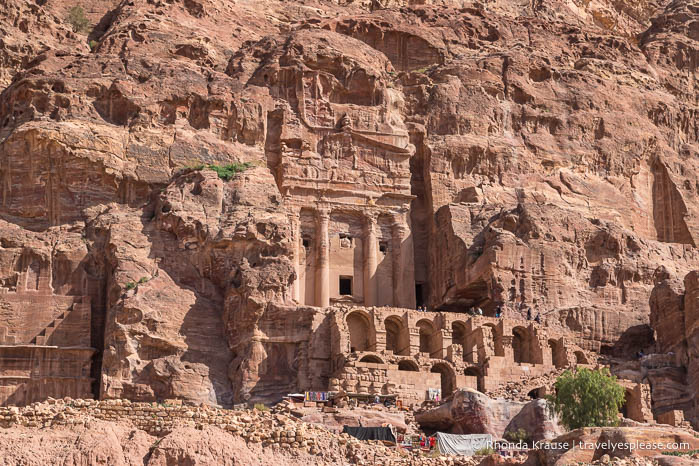
Tours of Petra
Here is a trusted site with a large selection of tours of Petra. You can book a private guided tour starting in Wadi Musa or a full-day trip to Petra from Amman.
Accommodations Near Petra
For your convenience, here is a list of hotels in Wadi Musa, the gateway town to Petra. Please consider booking your Wadi Musa accommodations through the included link. It costs nothing extra and helps support this website. Thank you!
